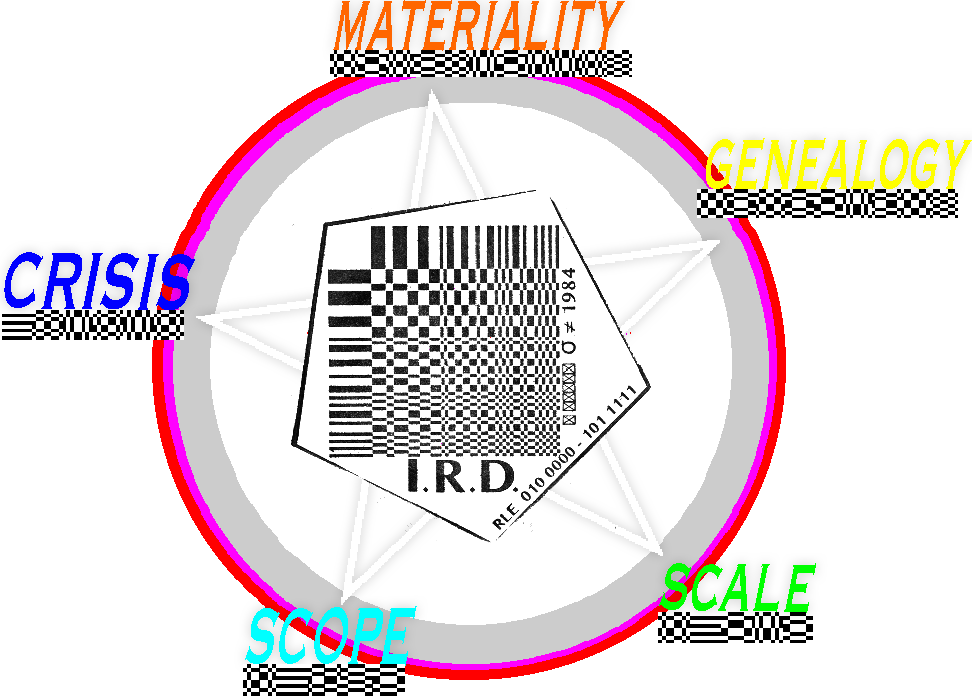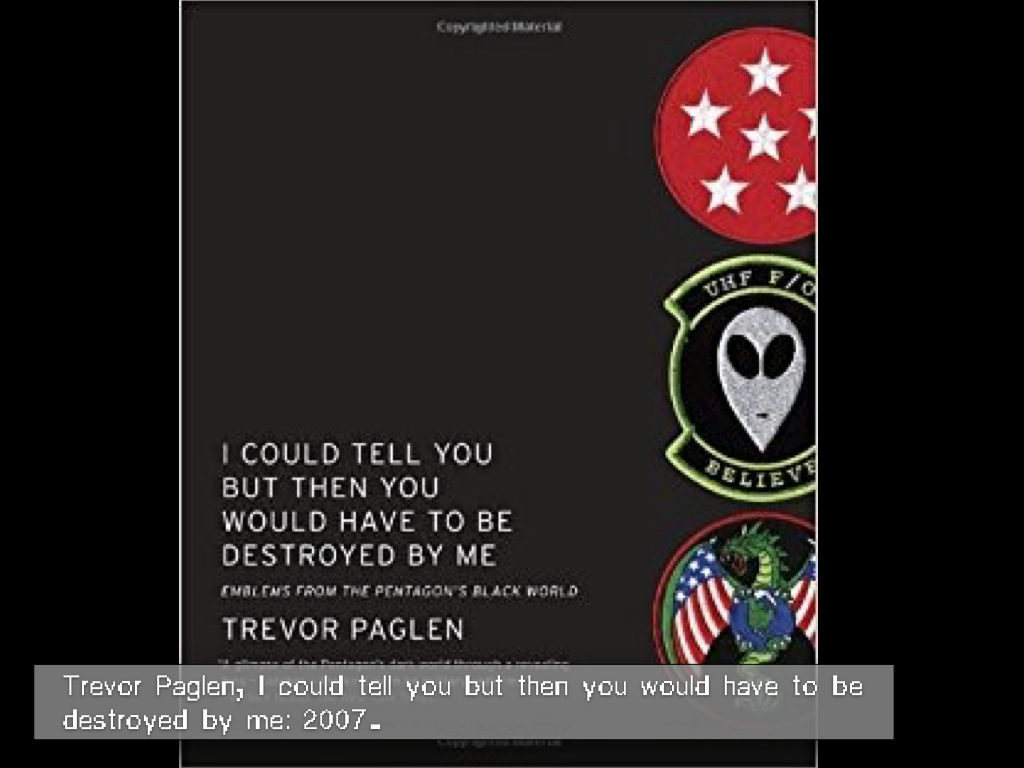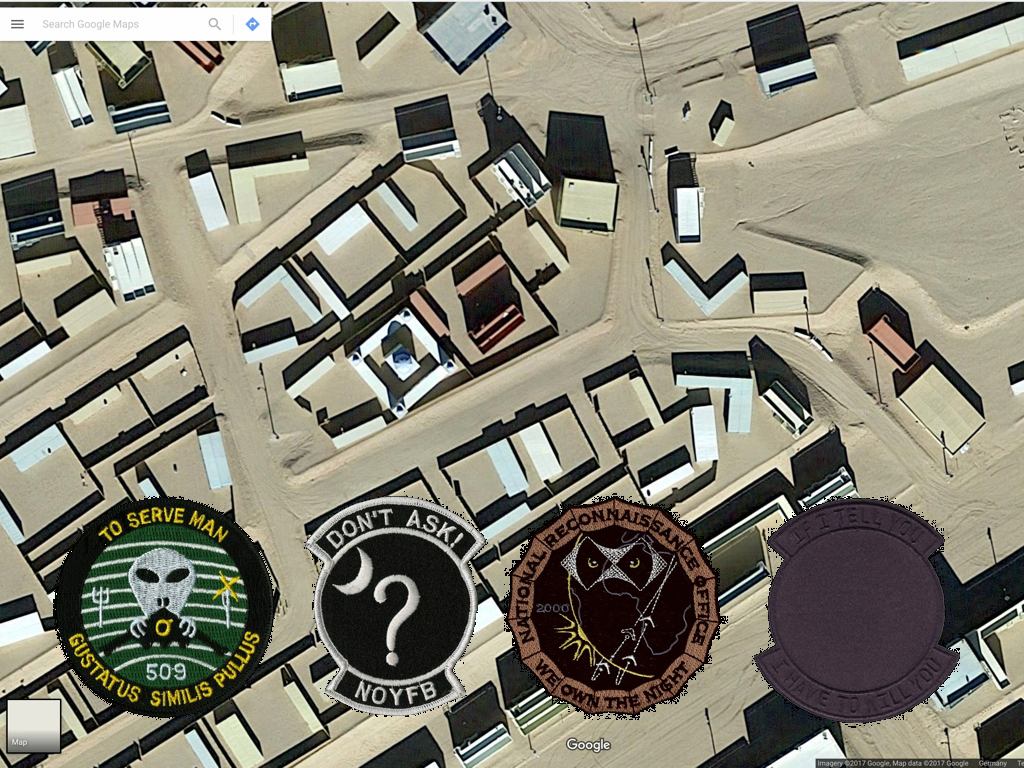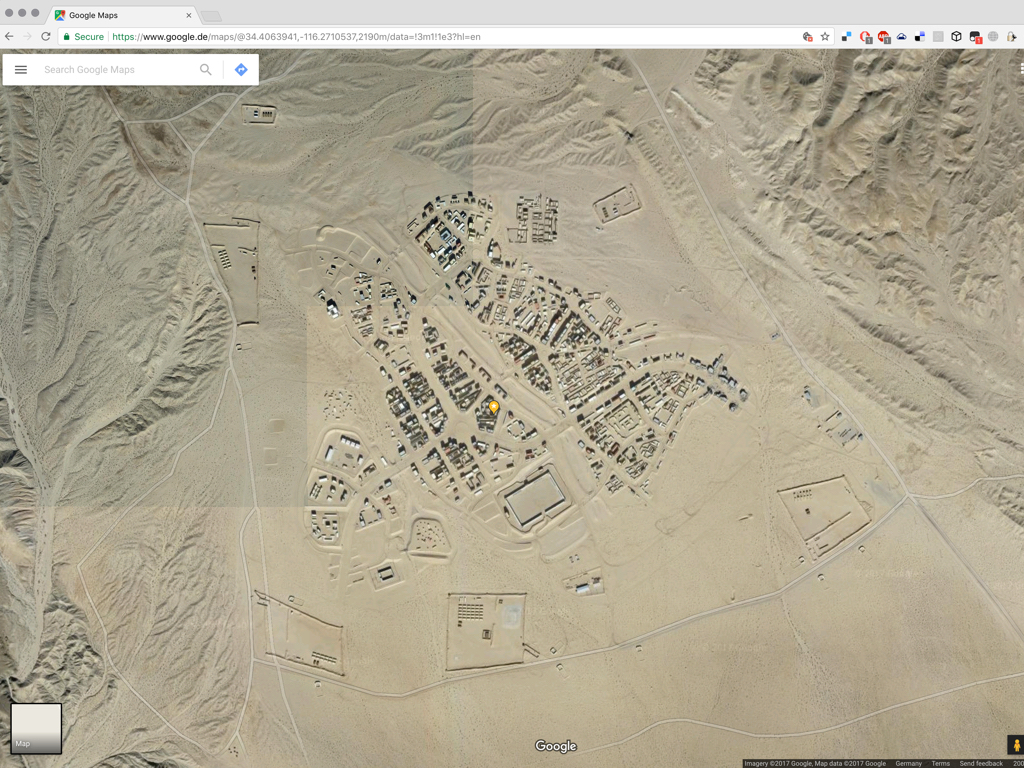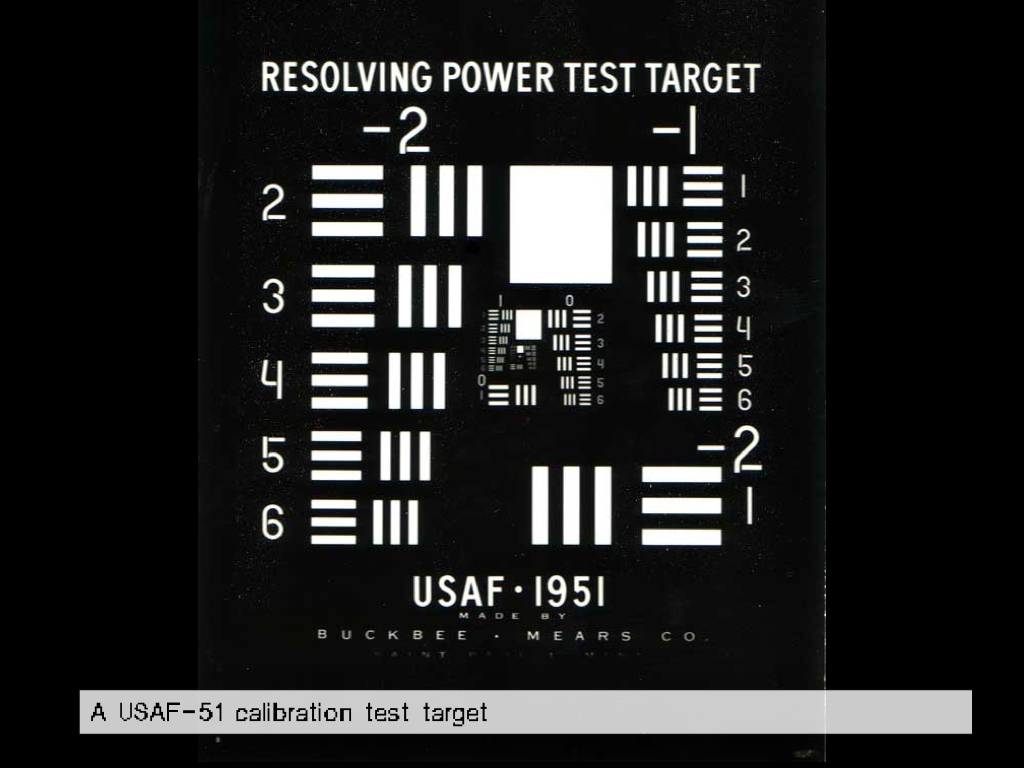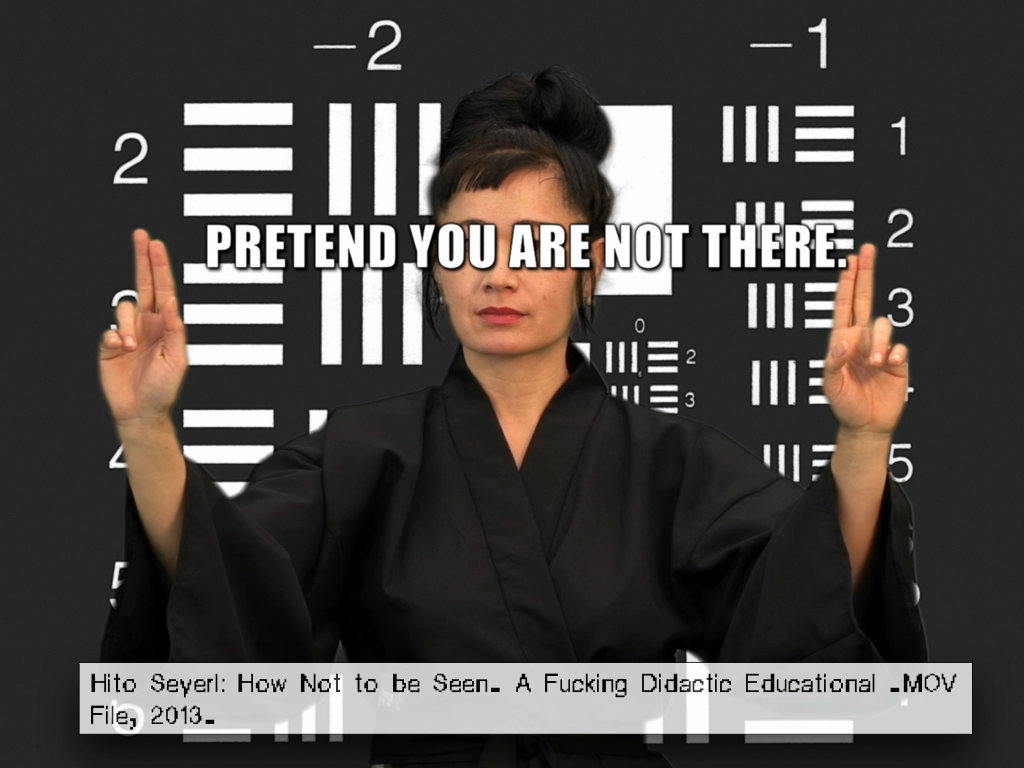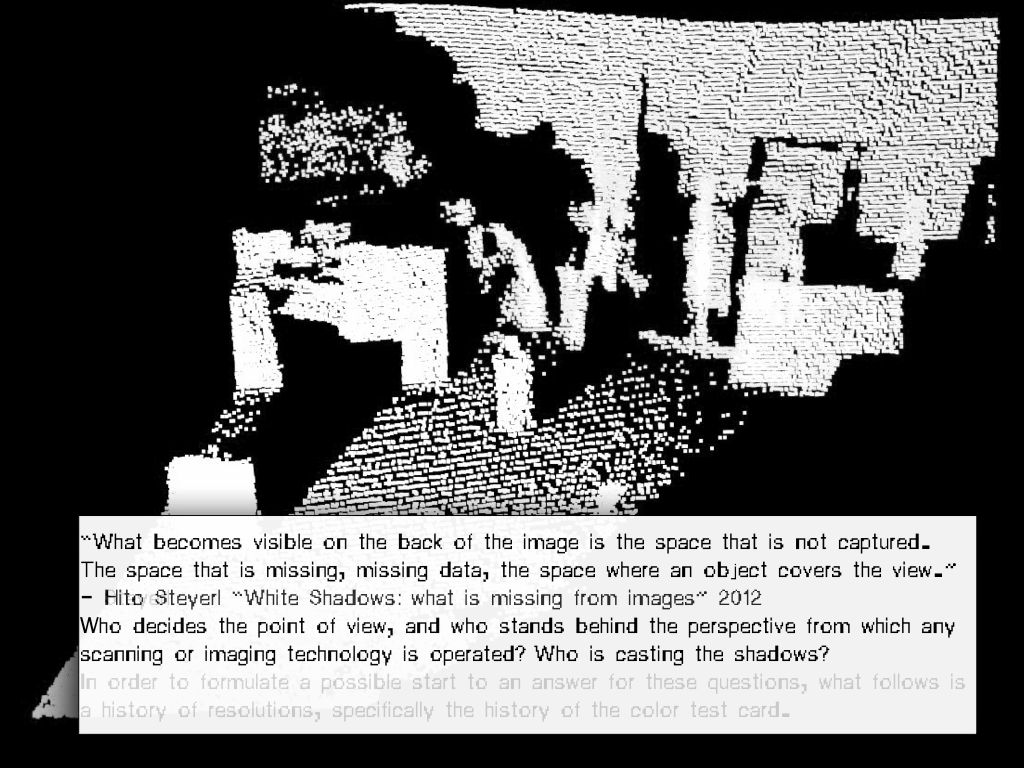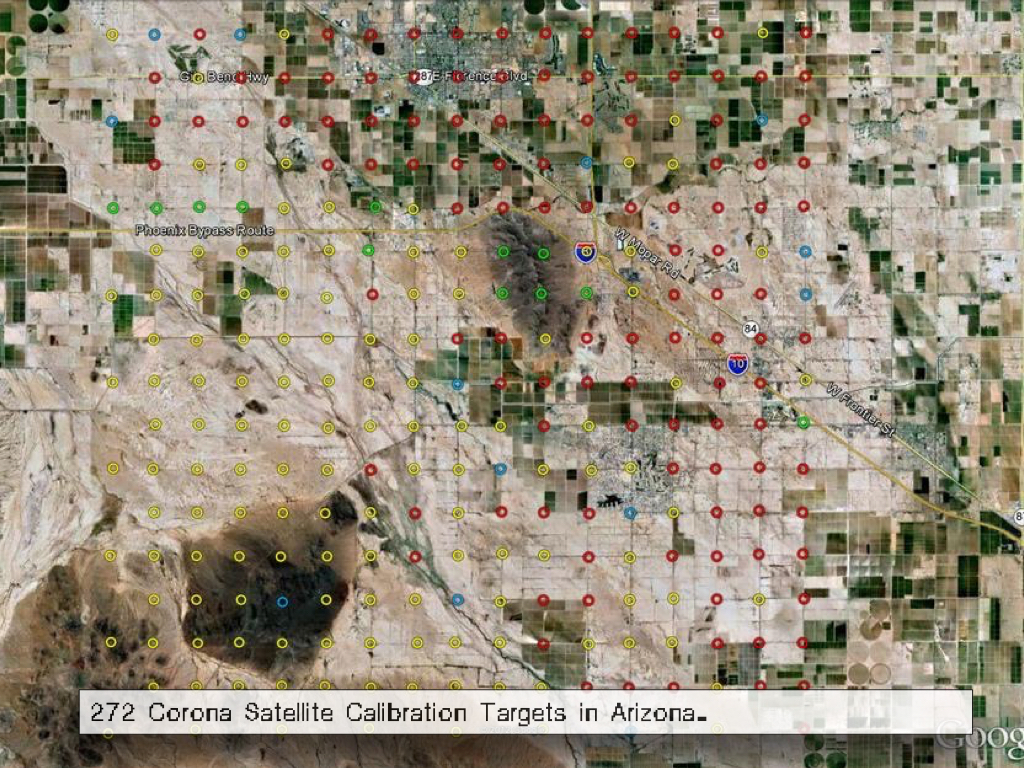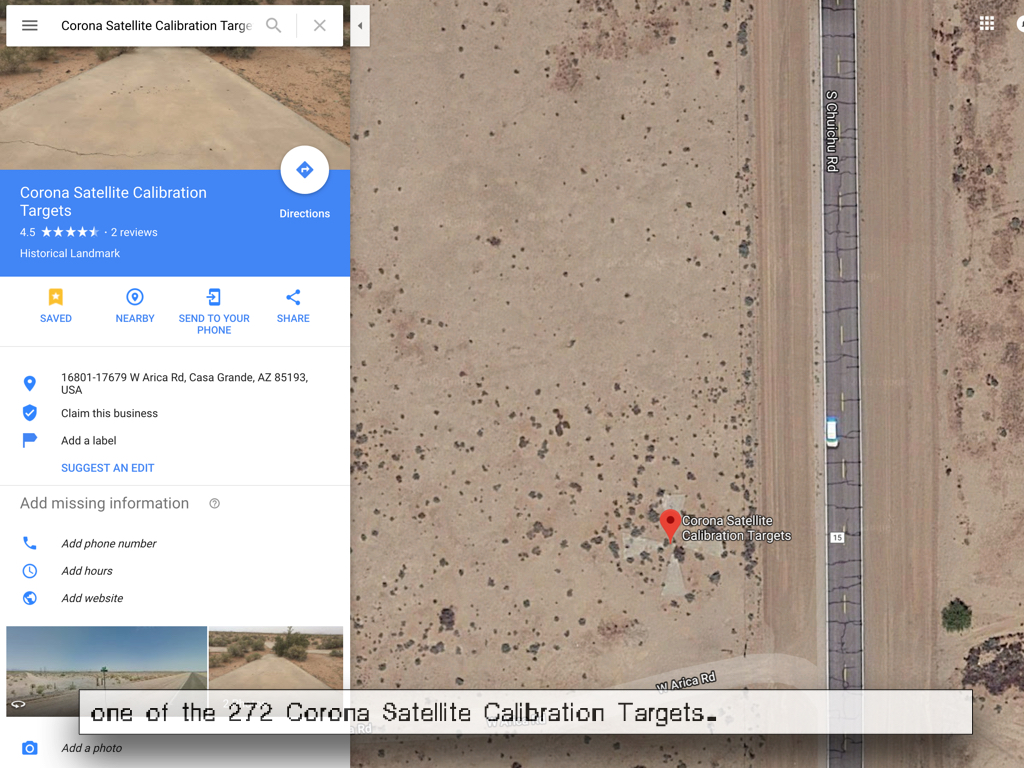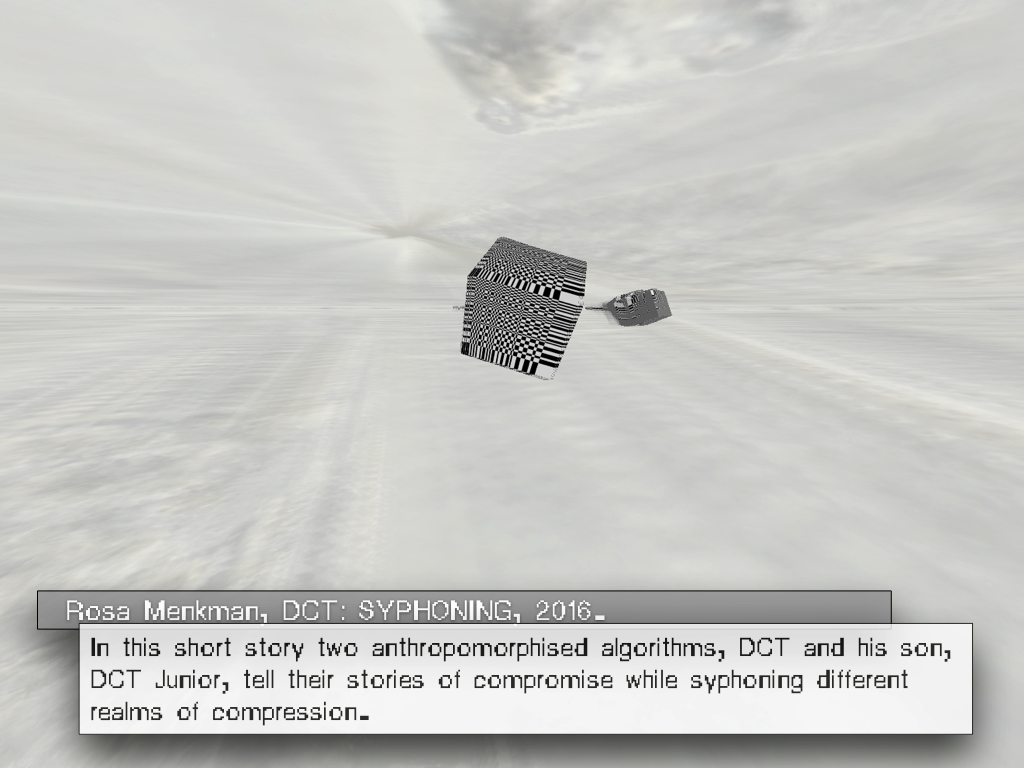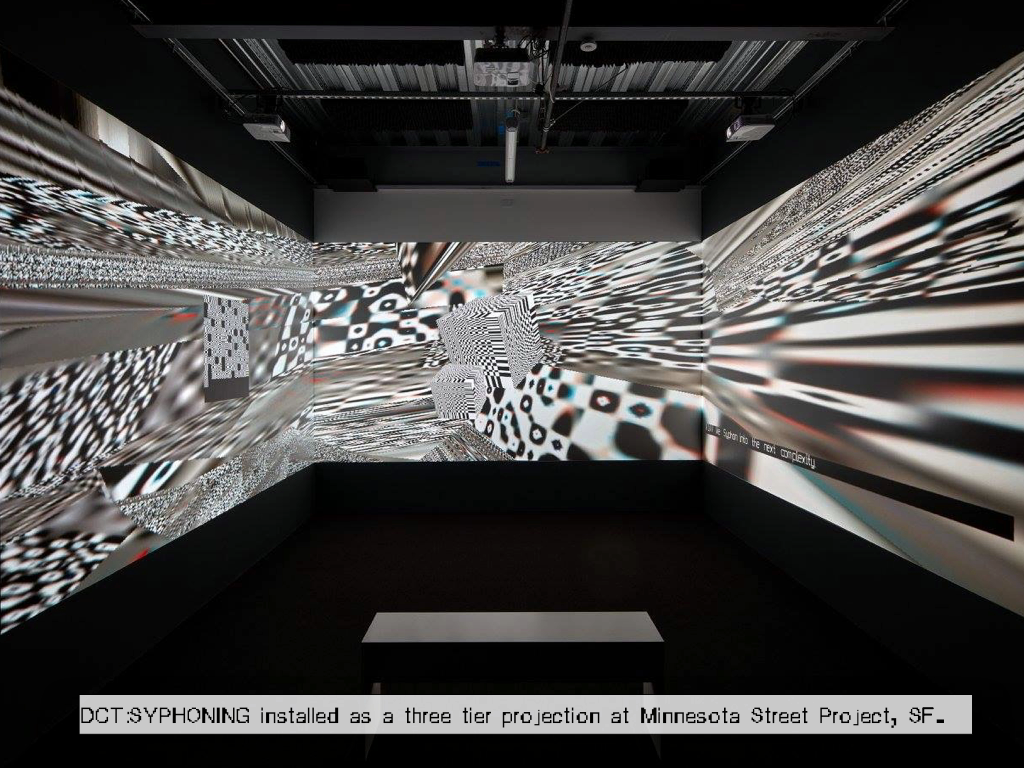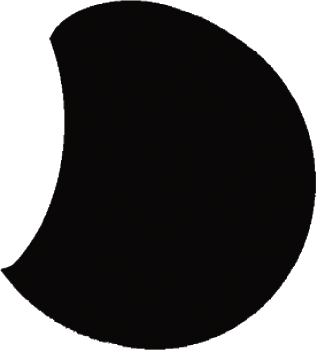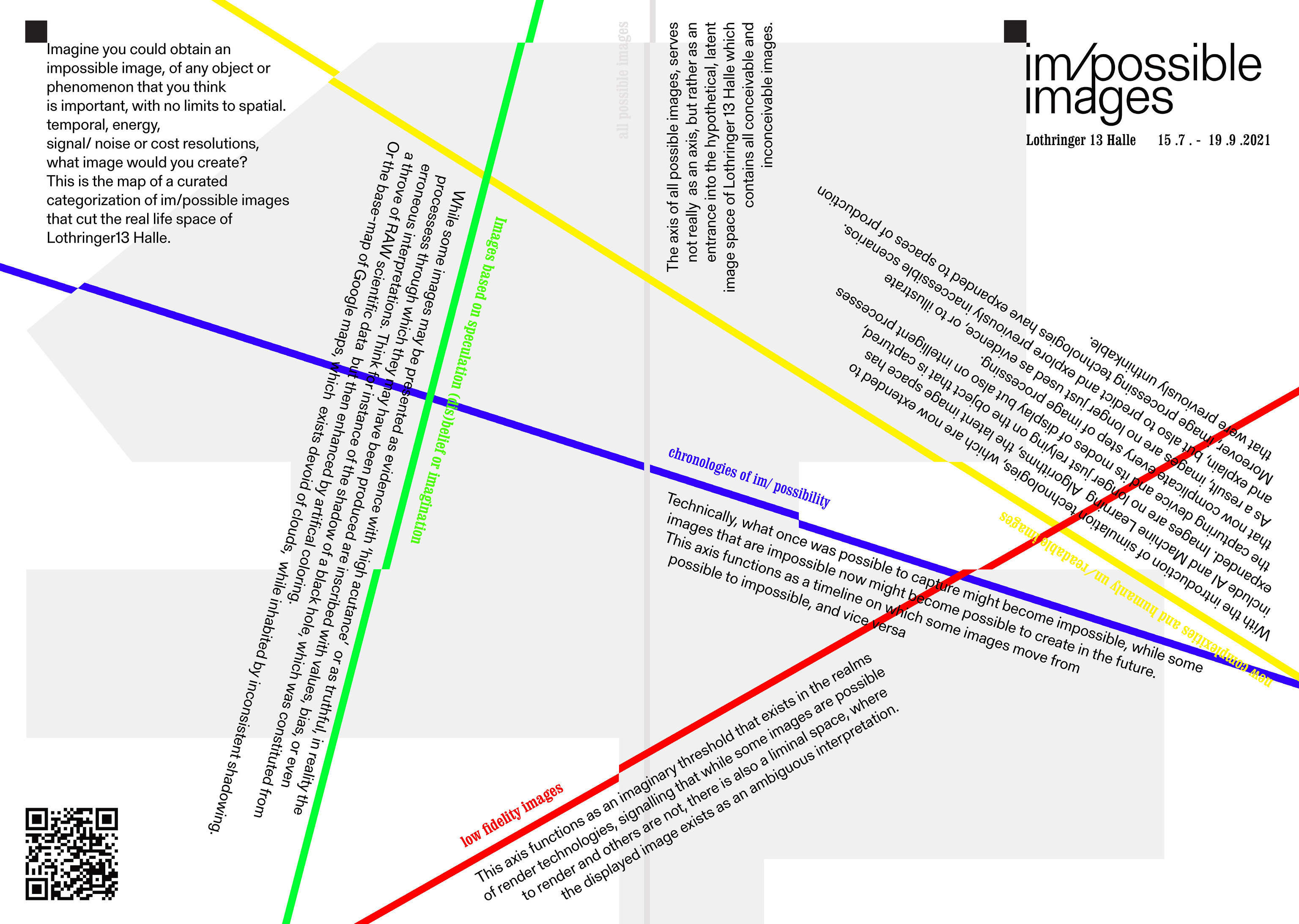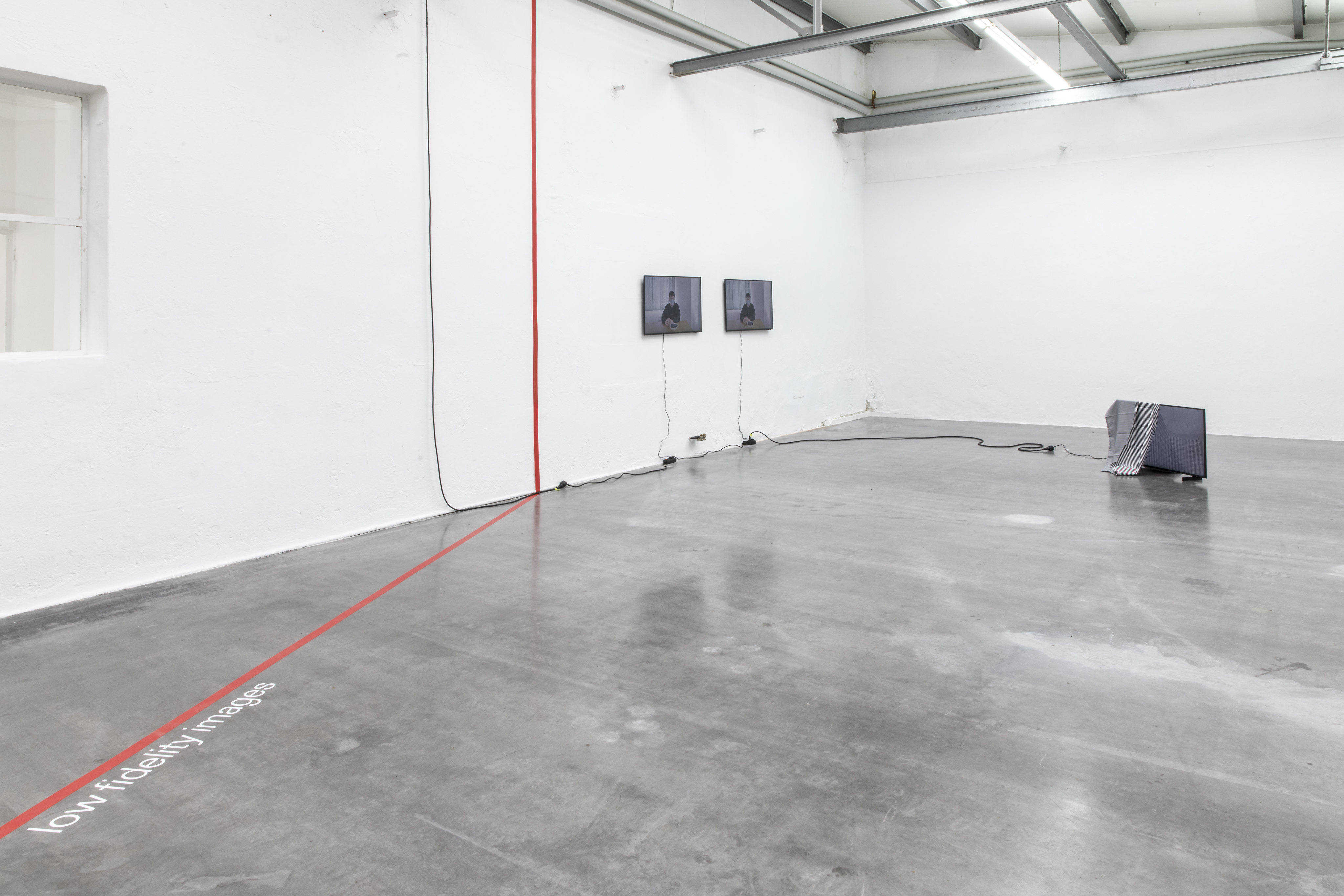SCALE
[ 0100 ]
...
..
Knowledge of the hidden and knowledge of the measurable What happens when something exist outside the dimensions or system units of scale? In order to distinguish something of significance from its background environment we must first be able to perceive it. If it remains invisible, inaudible, intangible, or unmeasurable it remains indiscribable and therefore unknowable at least to most of us.
.
..
Knowledge of the hidden and knowledge of the measurable What happens when something exist outside the dimensions or system units of scale? In order to distinguish something of significance from its background environment we must first be able to perceive it. If it remains invisible, inaudible, intangible, or unmeasurable it remains indiscribable and therefore unknowable at least to most of us.
.
- Graham Harman on OOO objects.
. In 2013, Steyerl released the video essay: How Not to be Seen: A Fucking Didactic Educational .MOV File. In that video Essay, she
[or: Distances from and behind the screen]
Scale, aspect ratio, size, frequency.
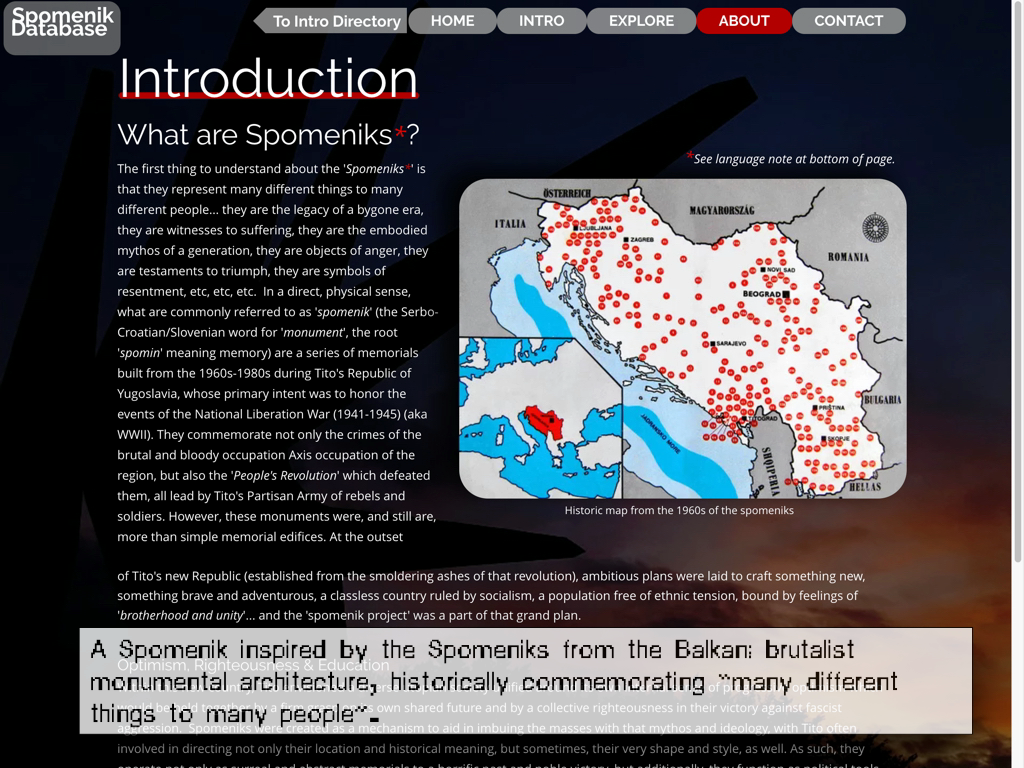


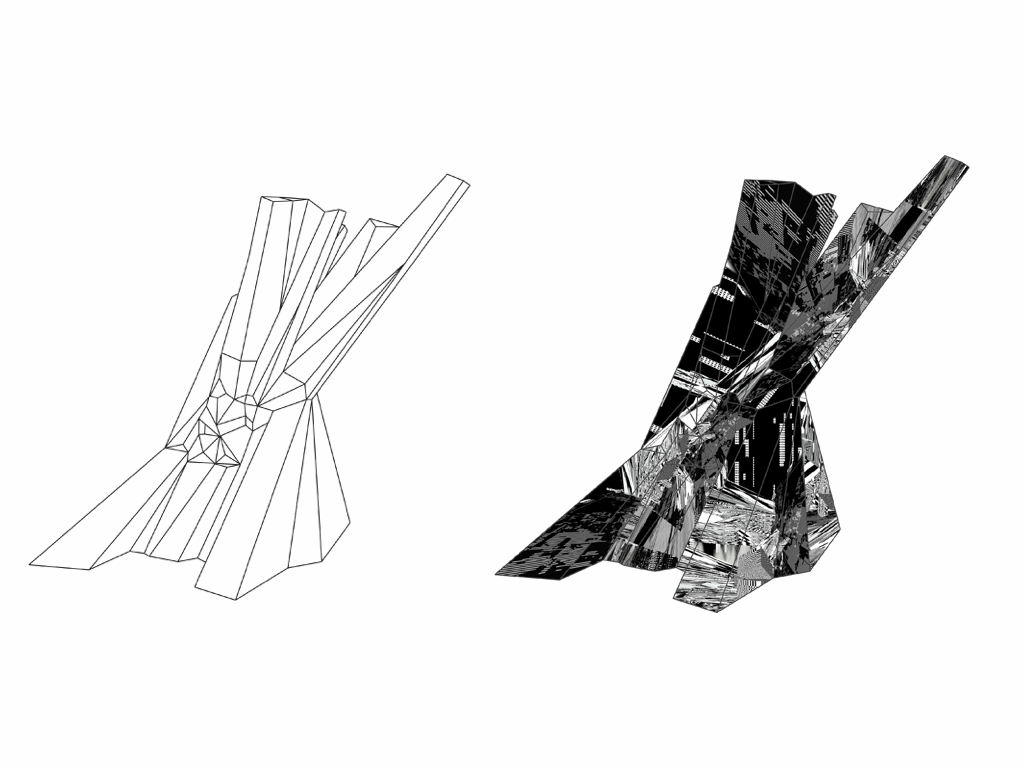
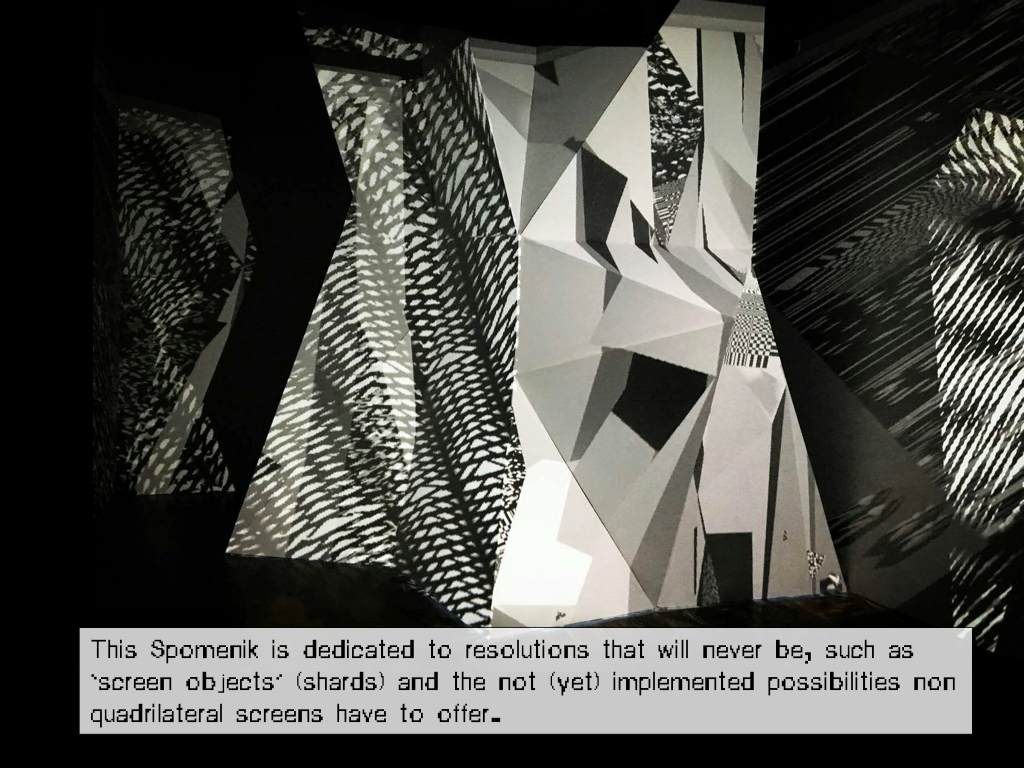
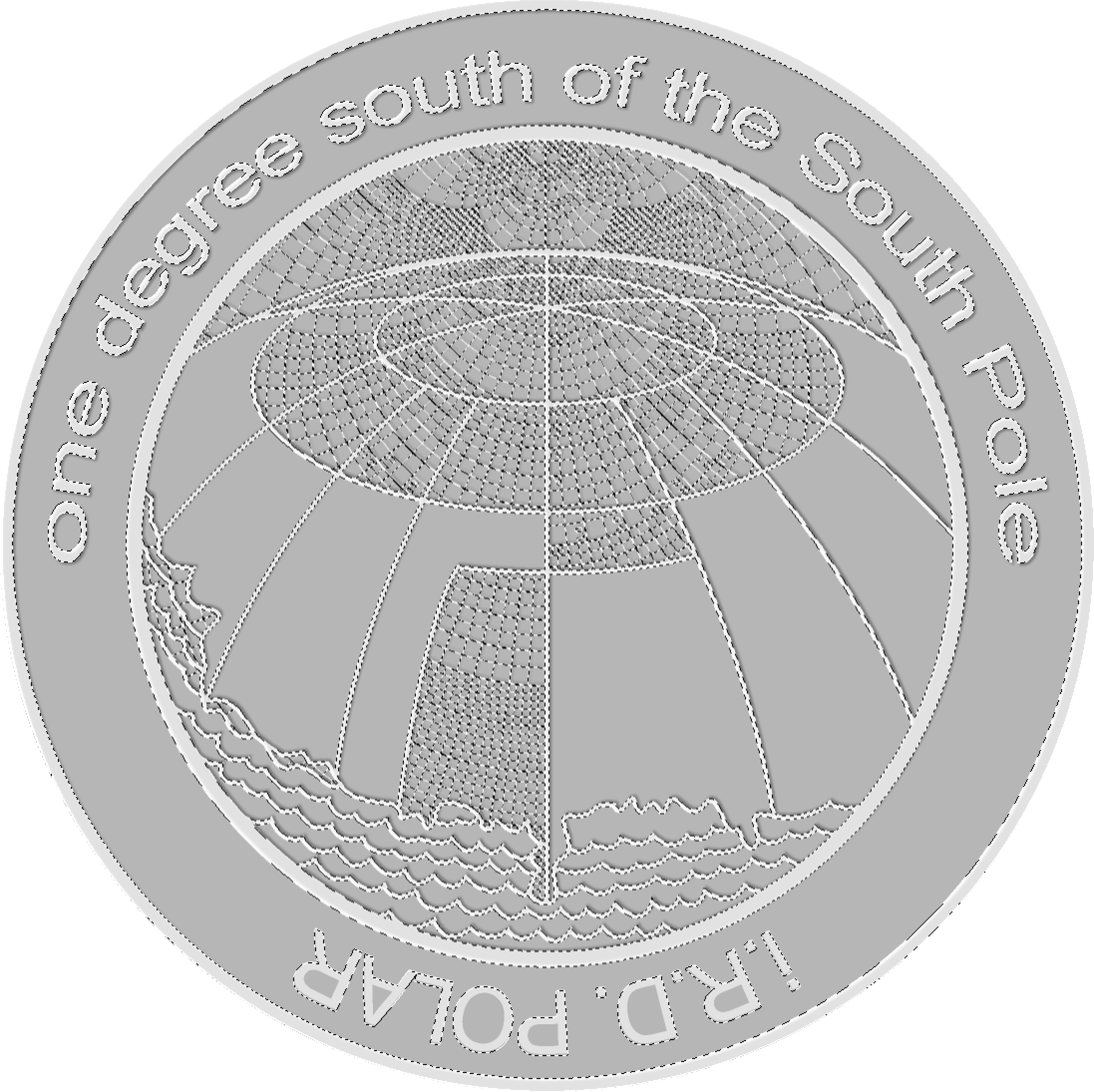
Whiteout (2020)
︎ read: PDF Essay as published by Photoresearcher
Whiteout is based on an essay of the same title, originally written for AX15 (see below)
The sound starting from around minute 9 is from a live performance recording by Mario de Vega.
The stroboscopic images are all from the slides of the 2 year colloquium “Resolution Studies”
Whiteout is inspired by my time during the CERN Collide, our climb of the Brocken and a voyage on board of a ship of the Chilean army to Antartica.
In Whiteout, I tell the story of an exhausting hike during a snowstorm. As we makes our way up the mountain, I experience the loss of physical sensations - leading to an inability to see, hear, or orient myself. While at first I knew what direction I was going, now, the spatial dimensions are wiped out. I experience oversaturation by nothing - as the environment starts to offer itself in new ways.
I ask myself, what does it mean, to move without visual or auditory references
or to physically plot a course when there is no conventional sense of direction or even horizon?
To feel oversaturated, by a lack of anything? What new ways of sensing can be found?
︎ ARTFORUM write up: ArtForum, December ‘21, page 207
Whiteout is based on an essay of the same title, originally written for AX15 (see below)
The sound starting from around minute 9 is from a live performance recording by Mario de Vega.
The stroboscopic images are all from the slides of the 2 year colloquium “Resolution Studies”
Whiteout is inspired by my time during the CERN Collide, our climb of the Brocken and a voyage on board of a ship of the Chilean army to Antartica.
In Whiteout, I tell the story of an exhausting hike during a snowstorm. As we makes our way up the mountain, I experience the loss of physical sensations - leading to an inability to see, hear, or orient myself. While at first I knew what direction I was going, now, the spatial dimensions are wiped out. I experience oversaturation by nothing - as the environment starts to offer itself in new ways.
I ask myself, what does it mean, to move without visual or auditory references
or to physically plot a course when there is no conventional sense of direction or even horizon?
To feel oversaturated, by a lack of anything? What new ways of sensing can be found?
︎ ARTFORUM write up: ArtForum, December ‘21, page 207




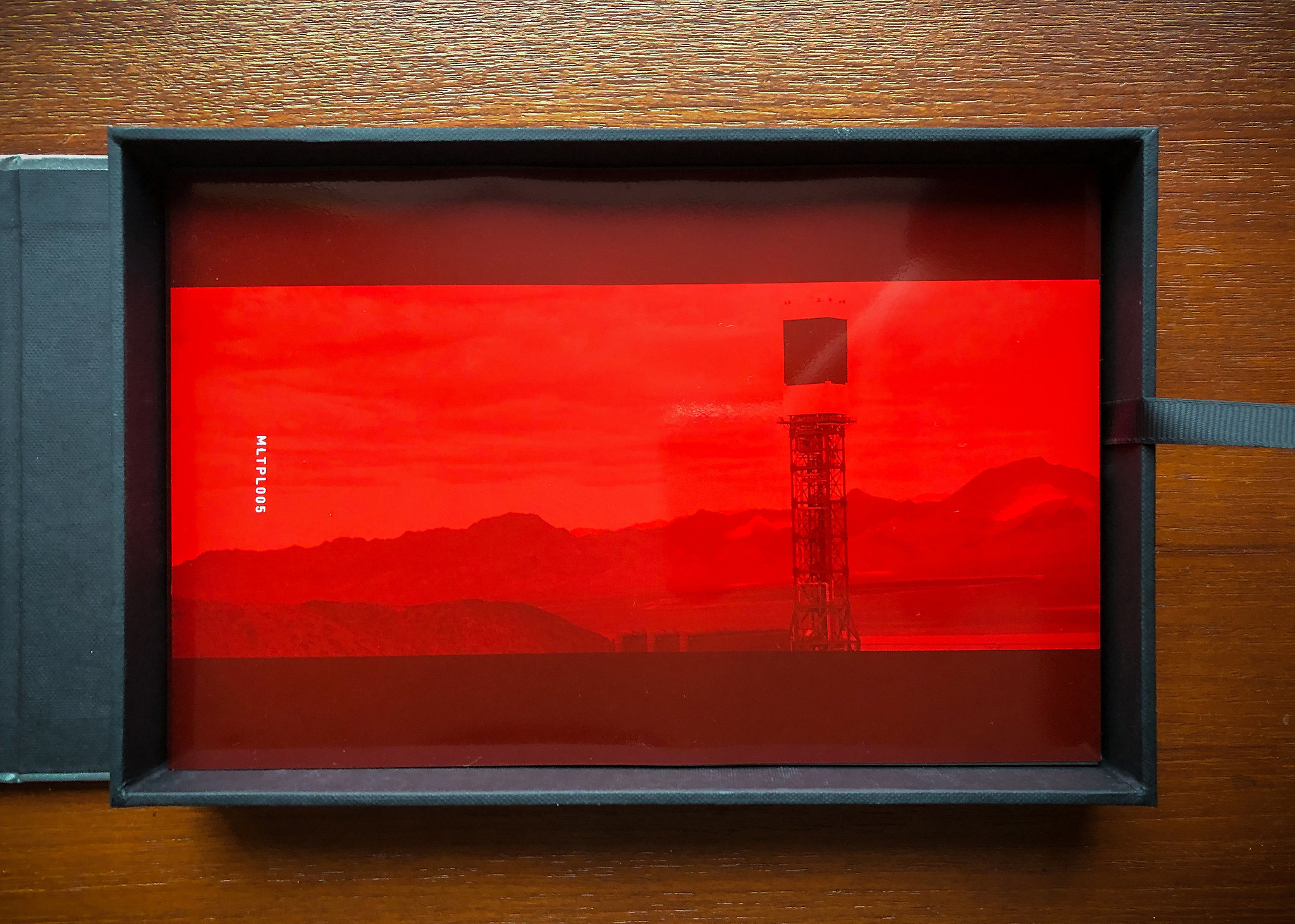







About Im/Possible Images
The 2010s have been a very interesting decade for the creation and generation of images of reality and beyond. The discovery of the Higgs boson particle (2012) and the capturing of the shadow of a black hole (2019) are two of the most prominent examples of science and imagination colliding, shattering the lines of what was previously understood as universal reality. It's been a decade during which it became common knowledge that standard models need extensions, fields of knowledge continuously scale up and down and AI is used pervasively to predict not only the future, but also to see beyond the unseeable. What was once deemed impossible, has become possible.In 2019 I won the Collide at CERN/Barcelona award with my proposal “Shadow Knowledge”, a project about the fringes of what is enlightened (or: not in the dark). Subsequently, I was awarded a two month residency at CERN, with an additional month in its partnering city of science, Barcelona. In my research proposal, I used the shadow as a metaphor: “In the shadows, things lack definition. The shadows offer shady outlines that can function either as a vector of progress or as a paint by numbers.” I proposed research about what can just be seen or sensed, and about how these new and other techniques can be deployed to derive knowledge about objects of unsupported scale and dimension.
In September that year I finally made it to the largest experiment in the world. But upon arrival at CERN I quickly encountered multiple linguistic clashes. Where I, as an artist, like to use poetic phrases such as Shadow Knowledge, communicating this way with members of the scientific community remained difficult. Our use of language did not jive. Pretty quickly, it became clear I had to cross over to a scientific use of language and find a way to communicate that made sense to the scientists there. A challenge compounded due to differences in language between scientific disciplines, methods, and even experiments.
To consider this challenge I sat down with my two scientific partners: Jeremi Niedziela and Rolf Landua.
With their generous help I reframed my research into a single question:
Imagine you could obtain an 'impossible' image
of any object or phenomenon that you think is important,
with no limits on spatial, temporal, energy, signal/noise or cost resolutions.
What image would you create?
(The answer can be a hypothetical image of course!)
During the three months of my residency I asked every scientist I met this question. Not only for them to consider what images are possible or impossible, but also to probe and isolate the mechanics at work whenever a certain type of image (or rendering) is or becomes ‘impossible,’ or similarly, when a method of rendering gets compromised (deleted, discarded or obsolete). This new method of inquiry worked really well; I rapidly collected countless im/possible images in dialogues with scientists, via email, and through an online form set up for this purpose.
The BLOB of Im/Possible Images // Im/Possible 图像的 BLOB
During the three month CERN Collide and Barcelona residency I asked every scientist I met this question:
Imagine you could obtain an 'impossible' image
of any object or phenomenon that you think is important,
with no limits on spatial, temporal, energy, signal/noise or cost resolutions.
What image would you create?
(The answer can be a hypothetical image of course!)
The collection of "im/possible" images I gathered, reveal both the limitations and possibilities of human imagination and understanding. I compiled the collection into a virtual exhibition named the BLOB (Binary Large OBject) of im/possible images, which offers an immersive environment for visitors to explore and reflect on the nature of imaging. The BLOB not only celebrates the potentialities of images but also emphasizes the constraints and compromises inherent in current image processing technologies.
Imagine you could obtain an 'impossible' image
of any object or phenomenon that you think is important,
with no limits on spatial, temporal, energy, signal/noise or cost resolutions.
What image would you create?
(The answer can be a hypothetical image of course!)
The collection of "im/possible" images I gathered, reveal both the limitations and possibilities of human imagination and understanding. I compiled the collection into a virtual exhibition named the BLOB (Binary Large OBject) of im/possible images, which offers an immersive environment for visitors to explore and reflect on the nature of imaging. The BLOB not only celebrates the potentialities of images but also emphasizes the constraints and compromises inherent in current image processing technologies.

Background story to the BLOB at the Lothringer 13 Halle.
My collection of images displayed the diverse limits of image processing technologies in existence. I learned that some images are currently impossible due to certain restraints (e.g. money or knowledge), while others will remain impossible due to the laws of physics and the universe itself. As such they will forever exist in the hypothetical realms of our imagination.
Using the virtual exhibition toolkit New Art City, I installed a selection of my collection of im/ possible images in a low poly rendition that I named the BLOB of im/possible images. In front of the BLOB (a Binary Large OBject), the visitor is welcomed by the Angel of History who points at the BLOB, urging visitors to enter it. A map reminiscing the realms of Compression Complexities is installed next to her, while behind her the Staircase to Nowhere spirals Northward.
The BLOB was built to give a metaphoric ‘shape’ to the space of all images, past and future. Different Axes of Affordance cut the BLOB. These parameters describe the mechanics that define what is resolved and as a result, what is compromised, or in other words, will not be rendered. While in reality, the space of all im/possible images is fragmented, organized by actions and affordances, stacked by the history of image processing technologies, and consolidated in resolutions, the BLOB offers a space where imaginary propositions are possible. In the BLOB visitors can look and think through images as fluid, released from the otherwise rigid settings, resolutions, affordances and compromises.
Visitors can enter the BLOB through a dark round portal, imaging a Shadow of Dark Matter. Upon entering, they are confronted with A Pale Blue Dot that shines from the depths of the universe, while on the right, The Quantum Vacuum at a Slice of Planck Constant Time flickers rapidly. Right next to it, an image of the insides of a proton shows 3 quarks, the tiniest known building blocks of the universe. Normally, these images are impossible, but the hypothetical realms of the BLOB offer pasture to these im/possible renders.
In the summer of 2021, I was invited by Luzi Gross to conceptualize and curate a physical exhibition of im/possible images at the Lothringer 13 Halle (München). The exhibition was an opportunity to transform the Lothringer into a real space actualisation of the virtual BLOB. In the space of the Lothringer five categories of im/possibility were introduced as parameters or axes of affordances. These axes materialized as architectural elements that physically cut through the rooms of the exhibition halls. But we stopped short of calling the Lothringer a BLOB, instead calling the exhibition the latent space of im/possible images.
In analogue photography, the latent image space exists when photosensitive material has been exposed, but has not gone through a process of development (yet). It is the space that has been touched by light, but that is not showing trace evidence (in the form of an image). The im /possible images show used the term ‘latent image’ as an expanded concept, referring to a hypothetical space that exists before exposure and therefore can still develop every imaginable or unimaginable image.
The main premise of im/possible images is that once any action or decision in the procedure of image processing is initiated, a render parameter is chosen. Following this decision, the parameter operates as a metaphoric cut through the space of everything that can be rendered, dividing it up into images that remain possible, and images that, as a consequence of the decision, are impossible. Effectively, every render setting realizes particular images, while also compromising and complicating others.
In preparation for the show at Lothringer, I went back to my collection of im/possible images. But this time, I did this not to collect images to show, but rather lifted out certain categories I wanted to illustrate via work based in artistic research (as opposed to the mostly scientific illustrations featured in the BLOB).
[ white axis ] all possible images
works:
︎Fabian Heller, All possible images [True Color, Full HD], Print on PVC, 18x2 metres, 2021.
The white axis, the axis of all possible images, starts outside the gallery and serves as the entrance into the hypothetical latent image space of Lothringer 13 Halle. The axis features two works; the BLOB of im/possible images and All Possible Images [True Color, Full HD] (2021). The latter, All Possible Images, is an entirely new, commissioned work by Fabian Heller. In All Possible Images, Heller explores the absolute maximal, finite number of possible renders an HD computer screen can display. Given enough time (and screens to render on), any sequence of pixels - or ways to fill up an HD display - will eventually occur somewhere at some moment in the world. However, the number of images that a FullHD screen can render is immense. It stretches beyond understanding at a human scale - and ushers in a scenario reminiscent of Borges’ Library of Babel and Émile Borels infinite monkey theorem. In an essay in the im/possible images reader Heller therefore concludes that All Possible Images comes with its own impossibilities.
works:
︎Rosa Menkman, BLOB of Im/Possible Images, 3D word, 2021.
The white axis, the axis of all possible images, starts outside the gallery and serves as the entrance into the hypothetical latent image space of Lothringer 13 Halle. The axis features two works; the BLOB of im/possible images and All Possible Images [True Color, Full HD] (2021). The latter, All Possible Images, is an entirely new, commissioned work by Fabian Heller. In All Possible Images, Heller explores the absolute maximal, finite number of possible renders an HD computer screen can display. Given enough time (and screens to render on), any sequence of pixels - or ways to fill up an HD display - will eventually occur somewhere at some moment in the world. However, the number of images that a FullHD screen can render is immense. It stretches beyond understanding at a human scale - and ushers in a scenario reminiscent of Borges’ Library of Babel and Émile Borels infinite monkey theorem. In an essay in the im/possible images reader Heller therefore concludes that All Possible Images comes with its own impossibilities.
[ red axis ] low fidelity images
works:
︎UCNV, Supercritical, Video installation, 2019.
︎Peter Edwards, Nova Drone, Interactive installation, 2012.
30 meters onwards, the white axis intersects with a red axis named the axis of low fidelity images. This red axis functions as an abstract threshold that exists in the realms of digital rendering technologies, beyond the simple binaries otherwise used to understand whether an image can or can not be rendered and features works by UCNV and Peter Edwards.
Images can be amalgamated rather than consolidated. This means that while image data might be static, the final image render is entirely dependent on the discrete steps of the (lofi) image render pipeline. The works exhibited along this red axis illustrate this. They are examples of images existing as non-static formations, or objects of ambiguous technical interpretation, that explore how technological affordances relate to medium specificity, limitation and erroneous consolidation. For instance, Edwards audio visual synthesizer, the Nova Drone, centers around a LED pulsating at high frequency, translated as image-information by the CCD chip (light capturing chip) that exists in most cell phones. Due to the mis-match in frequency between the light pulse of the LED in the Nova Drone and the speed at which the chip of the phone camera collects and writes away the light, a questionable interpretation appears in the memory - the photo roll - of the phone. Whereas Edwards shows how a mismatch in time resolution by our devices can resolve into beautiful, but erroneous, representations, UCNV illustrates how mechanics play out at the level of pixel resolution. His work Supercritical, also represented in an essay in this reader, demonstrates how changes in quantitative pixel resolution result in ambiguous, fluid data morphing. A mechanism that is taken one step further in Daniel Temkin’s contribution to this reader, a how-to guide titled “Unprintables”, which is a manual for creative quantitative pixel resolution mis-use.
works:
︎UCNV, Supercritical, Video installation, 2019.
︎Peter Edwards, Nova Drone, Interactive installation, 2012.
30 meters onwards, the white axis intersects with a red axis named the axis of low fidelity images. This red axis functions as an abstract threshold that exists in the realms of digital rendering technologies, beyond the simple binaries otherwise used to understand whether an image can or can not be rendered and features works by UCNV and Peter Edwards.
Images can be amalgamated rather than consolidated. This means that while image data might be static, the final image render is entirely dependent on the discrete steps of the (lofi) image render pipeline. The works exhibited along this red axis illustrate this. They are examples of images existing as non-static formations, or objects of ambiguous technical interpretation, that explore how technological affordances relate to medium specificity, limitation and erroneous consolidation. For instance, Edwards audio visual synthesizer, the Nova Drone, centers around a LED pulsating at high frequency, translated as image-information by the CCD chip (light capturing chip) that exists in most cell phones. Due to the mis-match in frequency between the light pulse of the LED in the Nova Drone and the speed at which the chip of the phone camera collects and writes away the light, a questionable interpretation appears in the memory - the photo roll - of the phone. Whereas Edwards shows how a mismatch in time resolution by our devices can resolve into beautiful, but erroneous, representations, UCNV illustrates how mechanics play out at the level of pixel resolution. His work Supercritical, also represented in an essay in this reader, demonstrates how changes in quantitative pixel resolution result in ambiguous, fluid data morphing. A mechanism that is taken one step further in Daniel Temkin’s contribution to this reader, a how-to guide titled “Unprintables”, which is a manual for creative quantitative pixel resolution mis-use.
[ green axis ] images based on speculation, dis/belief or imagination
works:
︎Susan Schuppli, Can the sun lie? Video, 2014–2015
︎Sasha Engelmann & Sophie Dyer, Open Weather, Installation & Workshop, 2020-2021
︎Rosa Menkman, Whiteout, video (15 min.), 2020
︎Quote by Ingrid Burrington "forever noon on a cloudless day"
︎NASA basemap of Earth.
A green axis titled images based on speculation, dis/belief or imagination runs almost perpendicular to the red axis. The works installed along this axis show the complex dynamic in images that are presented as evidentiary, truthful or scientific. They illustrate that all processes of image sourcing inevitably inscribe them with values, bias or even faulty interpretations.
One evocative example in the exhibition is the basemap of planet Earth. A map completely devoid of clouds, inhabited by inconsistent shadowing and a blanketing noon time zone - or as Ingrid Burrington rightfully states: on the basemap of planet Earth, it is “forever noon on a cloudless day.” In this reader there are three texts accompanying the green axis. First, a reprint of Susan Schuppli’s formidable essay Can the Sun Lie (2014-2015), in which she shares a striking account of how a system of belief can thwart scientific inquiry. Secondly, the manual for the open weather workshop that was used during the im/possible summer school at the Lothringer. With the help of this manual, one can listen to the NOAA satellites and decode their radio transmission to create a local weather report that goes beyond values of precipitation and temperature, but highlights under-represented values like smog, light or other environmental conditions (of pollution). The axis concludes with “Whiteout”, in which I tell the story of an exhausting mountain hike during a snowstorm and the experience of the loss of my physical sensations - leading to an inability to see, hear, or orient myself. While the spatial dimensions are at first seemingly wiped out, an experience of oversaturation starts to offer the environment to me in new, different imagery ways.
works:
︎Susan Schuppli, Can the sun lie? Video, 2014–2015
︎Sasha Engelmann & Sophie Dyer, Open Weather, Installation & Workshop, 2020-2021
︎Rosa Menkman, Whiteout, video (15 min.), 2020
︎Quote by Ingrid Burrington "forever noon on a cloudless day"
︎NASA basemap of Earth.
A green axis titled images based on speculation, dis/belief or imagination runs almost perpendicular to the red axis. The works installed along this axis show the complex dynamic in images that are presented as evidentiary, truthful or scientific. They illustrate that all processes of image sourcing inevitably inscribe them with values, bias or even faulty interpretations.
One evocative example in the exhibition is the basemap of planet Earth. A map completely devoid of clouds, inhabited by inconsistent shadowing and a blanketing noon time zone - or as Ingrid Burrington rightfully states: on the basemap of planet Earth, it is “forever noon on a cloudless day.” In this reader there are three texts accompanying the green axis. First, a reprint of Susan Schuppli’s formidable essay Can the Sun Lie (2014-2015), in which she shares a striking account of how a system of belief can thwart scientific inquiry. Secondly, the manual for the open weather workshop that was used during the im/possible summer school at the Lothringer. With the help of this manual, one can listen to the NOAA satellites and decode their radio transmission to create a local weather report that goes beyond values of precipitation and temperature, but highlights under-represented values like smog, light or other environmental conditions (of pollution). The axis concludes with “Whiteout”, in which I tell the story of an exhausting mountain hike during a snowstorm and the experience of the loss of my physical sensations - leading to an inability to see, hear, or orient myself. While the spatial dimensions are at first seemingly wiped out, an experience of oversaturation starts to offer the environment to me in new, different imagery ways.
documentation:
︎Röntgen, Röntgen photo, print, 1896
︎NASA Voyager / Carl Sagan, Pale blue dot, 1990
︎Medipix, spectroscopic X-ray 2018
[ yellow axis ] new complexities and humanly un/readable images
works:
︎Alan Warburton, RGB FAQ, Video essay (27:38 min), 2020
︎Memo Akten, Learning to See: Gloomy Sunday, HD Video (3:02 min), 2017
︎Rosa Menkman, Shredded Hologram Rose (4:30 min) 2021
Finally, the yellow axis presents new complexities and humanly un/readable images. This axis focuses on new layers of image processing, added since the advent of AI image generation. During the exhibition in the Lothringer Alan Warburtons video essay RGBFAQ, of which the text is reproduced in this reader, was seen in the basement. In RGBFAQ, Warburton asks what the computational image is? Completing the axis are Memo Aktens’ Learning to See (2017) and The Shredded Hologram Rose (Rosa Menkman, 2021).
works:
︎Alan Warburton, RGB FAQ, Video essay (27:38 min), 2020
︎Memo Akten, Learning to See: Gloomy Sunday, HD Video (3:02 min), 2017
︎Rosa Menkman, Shredded Hologram Rose (4:30 min) 2021
Finally, the yellow axis presents new complexities and humanly un/readable images. This axis focuses on new layers of image processing, added since the advent of AI image generation. During the exhibition in the Lothringer Alan Warburtons video essay RGBFAQ, of which the text is reproduced in this reader, was seen in the basement. In RGBFAQ, Warburton asks what the computational image is? Completing the axis are Memo Aktens’ Learning to See (2017) and The Shredded Hologram Rose (Rosa Menkman, 2021).
The Im/Possible Images Reader
I initiated my - still in progress - research on im/possible images with a single question: Imagine you could obtain an 'impossible' image of any object or phenomenon that you think is important, with no limits on spatial, temporal, energy, signal/noise or cost resolutions. What image would you create? (the answer can be a hypothetical image of course!)
The Im/Possible Images Reader represents a moment in my journey to reflect on my progress and constitutes a collection of texts that range from short stories, to image work, manuals, (technical) documentation and essays that I consider to constitute valuable responses to this question. Some of these materials were specifically written for this reader, whereas others have been generously allowed to be reprinted.
The organization of this publication is modular; the chapters can be read independently. Despite this, we chose the order in which we present them for a reason: to provide a consistently additive flow that builds outwards from the five axes of the exhibition.
In conclusion, I would like to stress that after releasing this im /possible images reader, im /possible images will remain an active research platform, which can be visited here:
www.beyondresolution.info/impossible
The Im/Possible Images Reader represents a moment in my journey to reflect on my progress and constitutes a collection of texts that range from short stories, to image work, manuals, (technical) documentation and essays that I consider to constitute valuable responses to this question. Some of these materials were specifically written for this reader, whereas others have been generously allowed to be reprinted.
The organization of this publication is modular; the chapters can be read independently. Despite this, we chose the order in which we present them for a reason: to provide a consistently additive flow that builds outwards from the five axes of the exhibition.
In conclusion, I would like to stress that after releasing this im /possible images reader, im /possible images will remain an active research platform, which can be visited here:
www.beyondresolution.info/impossible
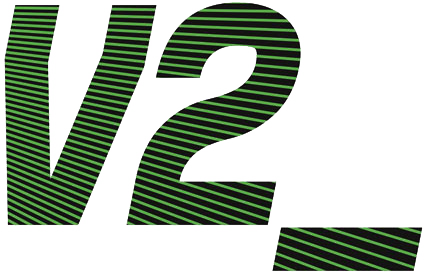 Part of the research for this reader was conducted in the framework of the Alex Adriaansens Residency at V2_Lab for the Unstable Media. Thanks to director Michel van Dartel and curator Florian Weigl.
Part of the research for this reader was conducted in the framework of the Alex Adriaansens Residency at V2_Lab for the Unstable Media. Thanks to director Michel van Dartel and curator Florian Weigl.MATERIALS
︎Rosa Menkman & Luzi Gross – im/possible images introduction and exhibition documentation
︎Fabian Heller – All Possible Images
︎UCNV – Into Supercritical
︎Daniel Temkin – Unprintables
︎OPEN WEATHER (Sasha Engelmann & Sophie Dyer) – The Im/Possible Weather Station & Workshop
︎Susan Schuppli – Can the Sun Lie?
︎Rosa Menkman – Whiteout
︎Alan Warburton – RGBFAQ
︎Klasse Digitale Grafik HfBK Hamburg – projects on im/possible images
︎Fabian Heller – All Possible Images
︎UCNV – Into Supercritical
︎Daniel Temkin – Unprintables
︎OPEN WEATHER (Sasha Engelmann & Sophie Dyer) – The Im/Possible Weather Station & Workshop
︎Susan Schuppli – Can the Sun Lie?
︎Rosa Menkman – Whiteout
︎Alan Warburton – RGBFAQ
︎Klasse Digitale Grafik HfBK Hamburg – projects on im/possible images
Realities Beyond Resolution
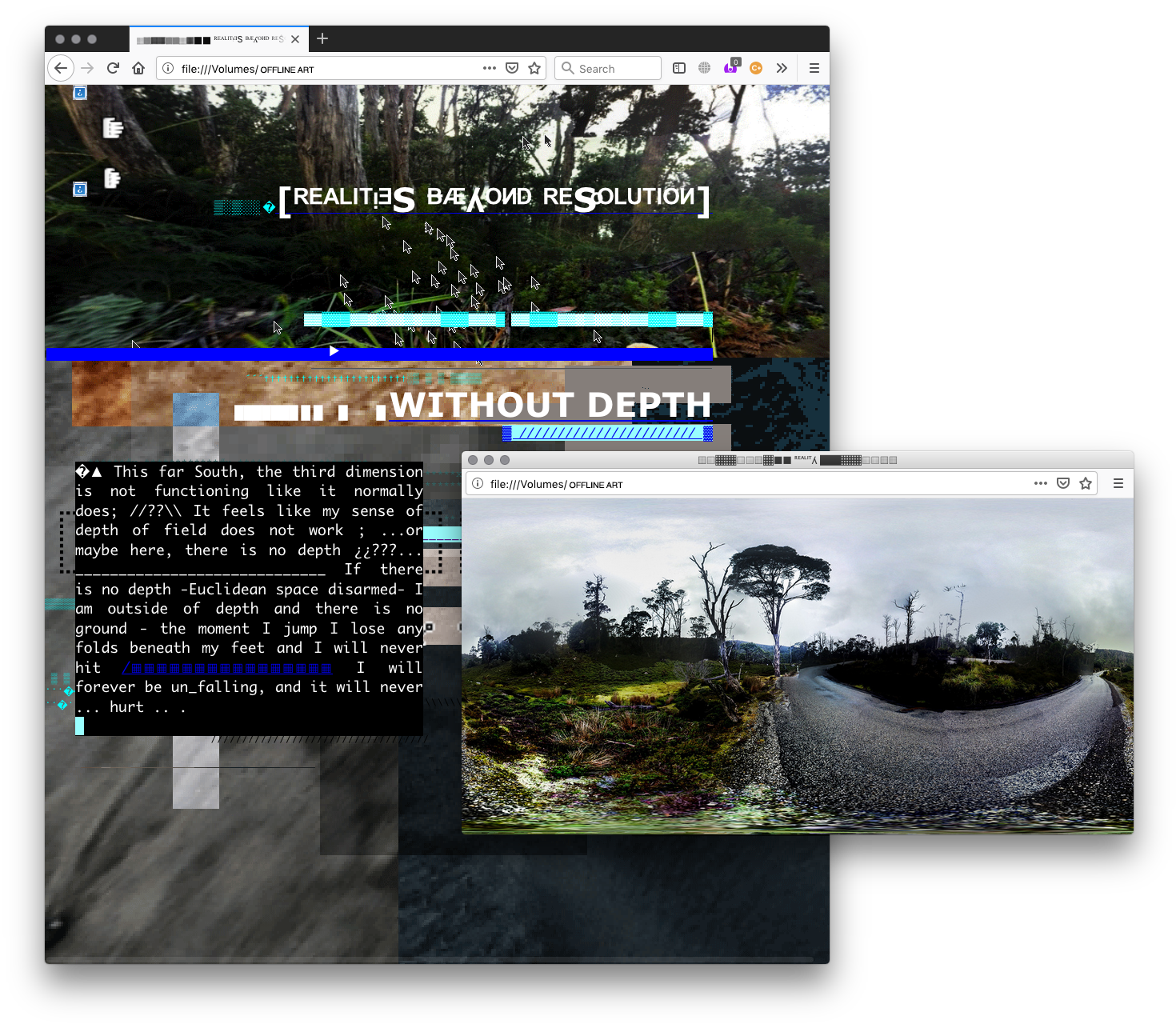 �▲ This far South, the third dimension is not functioning like it normally does; //?? It feels like my sense of depth of field does not work ; ...or maybe here, there is no depth ¿¿???... _____________________________ If there is no depth -Euclidean space disarmed- I am outside of depth and there is no ground - the moment I jump I lose any folds beneath my feet and I will never hit /▦▦▦▦▦▦▦▦▦▦▦▦▦▦▦▦ I will forever be un_falling, and it will never ... hurt .. .
�▲ This far South, the third dimension is not functioning like it normally does; //?? It feels like my sense of depth of field does not work ; ...or maybe here, there is no depth ¿¿???... _____________________________ If there is no depth -Euclidean space disarmed- I am outside of depth and there is no ground - the moment I jump I lose any folds beneath my feet and I will never hit /▦▦▦▦▦▦▦▦▦▦▦▦▦▦▦▦ I will forever be un_falling, and it will never ... hurt .. .
Realities Beyond Resolution as installed in OFFLINE ART: Hardcore by Aram Bartholl (2013)
‘Hardcore’ features a selected group of artists representing a wide range of radical approaches contrasting the mainstream idea of the digital image and web culture. Referring to subcultures in music during the 80s & 90s todays hardcore attitude can be found in various media and genres on the Internet. In the glossy controlled era of Facebook, Apple, and Google hardcore artists challenge conventions with radical points of view and hard core works.
‘Hardcore’ features a selected group of artists representing a wide range of radical approaches contrasting the mainstream idea of the digital image and web culture. Referring to subcultures in music during the 80s & 90s todays hardcore attitude can be found in various media and genres on the Internet. In the glossy controlled era of Facebook, Apple, and Google hardcore artists challenge conventions with radical points of view and hard core works.
▋⌁
[analogue]
[analogue]
/ VERTICAL CINEMA :: LUNAR STORM
Commissioned by Sonic Acts and ESA (European Space Agency) as part of the Vertical Cinema program.
About the Vertical Cinema project
What we usually identify as the indisputable ‘temple of film’, the Cinema, is not really a given, especially not in the realm of experimental cinematic arts. Yet this is somehow sidelined in the process of re-thinking the possibilities of cinematic experience, mostly because the architectural frame is already there, if only as a convention established a long time ago within the theatrical arts. Actually, the history of experimental cinema and the art of the moving image suggests that the space might very well be the crucial aspect of the total audiovisual experience – something one should always question and take into consideration when producing a work for audiovisual, sensory cinema.
For the Vertical Cinema project we ‘abandoned’ traditional cinema formats, opting instead for cinematic experiments that are designed for projection in a tall, narrow space. It is not an invitation to leave cinemas – which have been radically transformed over the past decade according to the diktat of the commercial film market – but a provocation to expand the image onto a new axis. This project re-thinks the actual projection space and returns it to the filmmakers. It proposes a future for filmmaking rather than a pessimistic debate over the alleged death of film.
Vertical Cinema is a series of fourteen commissioned large-scale, site-specific works by internationally renowned experimental filmmakers and audiovisual artists, which will be presented on 35 mm celluloid and projected vertically with a custom-built projector in vertical cinemascope.
The programme is made solely for projection on a monumental vertical screen that was first upended in 2013 at Kontraste Festival in Krems, Austria.
About Lunar Storm. 4’15’’ COLOUR; 2013.
The surface of the Moon seems static. Though it orbits the Earth every 27.3 days, with areas of it becoming invisible during this rotation, it is always (visibly or invisibly) above us, reassuringly familiar. The Moon is the best known celestial body in the sky and the only one besides the Earth that humans have ever set foot on.
The Seas of the Moon (Lunar Maria), consisting not of water but of volcanic dust and impact craters, appear motionless to the naked eye. Here, volcanic dust forms a thick blanket of less reflec- tive, disintegrated micro particles. But on rare occasions, beyond the gorges of these Lunar Maria, and only when the lunar termi- nator passes (the division between the dark and the light side of the moon) a mysterious glow appears. This obscure phenomenon, also known as lunar horizon glow, is hardly ever seen from Earth.
Beyond the gorges of the Lunar Maria, the Moon is covered with lunar dust, a remnant of lunar rock. Pummelled by meteors and bombarded by interstellar, charged atomic particles, the molecules of these shattered rocks contain dangling bonds and unsatisfied electric connections. At dawn, when the first sunlight is about to illuminate the Moon, the energy inherent to solar ultraviolet and X-ray radiation bumps electrons out of the unstable lunar dust; the opposite process occurs at dusk (lunar sunset). These electrostatic changes cause lunar storms directly on the lunar terminator that levitate lunar dust into the otherwise static exosphere of the Moon and result in ‘glowing dust fountains’.
official website || Vertical Cinema about
Commissioned by Sonic Acts and ESA (European Space Agency) as part of the Vertical Cinema program.
About the Vertical Cinema project
What we usually identify as the indisputable ‘temple of film’, the Cinema, is not really a given, especially not in the realm of experimental cinematic arts. Yet this is somehow sidelined in the process of re-thinking the possibilities of cinematic experience, mostly because the architectural frame is already there, if only as a convention established a long time ago within the theatrical arts. Actually, the history of experimental cinema and the art of the moving image suggests that the space might very well be the crucial aspect of the total audiovisual experience – something one should always question and take into consideration when producing a work for audiovisual, sensory cinema.
For the Vertical Cinema project we ‘abandoned’ traditional cinema formats, opting instead for cinematic experiments that are designed for projection in a tall, narrow space. It is not an invitation to leave cinemas – which have been radically transformed over the past decade according to the diktat of the commercial film market – but a provocation to expand the image onto a new axis. This project re-thinks the actual projection space and returns it to the filmmakers. It proposes a future for filmmaking rather than a pessimistic debate over the alleged death of film.
Vertical Cinema is a series of fourteen commissioned large-scale, site-specific works by internationally renowned experimental filmmakers and audiovisual artists, which will be presented on 35 mm celluloid and projected vertically with a custom-built projector in vertical cinemascope.
The programme is made solely for projection on a monumental vertical screen that was first upended in 2013 at Kontraste Festival in Krems, Austria.
About Lunar Storm. 4’15’’ COLOUR; 2013.
The surface of the Moon seems static. Though it orbits the Earth every 27.3 days, with areas of it becoming invisible during this rotation, it is always (visibly or invisibly) above us, reassuringly familiar. The Moon is the best known celestial body in the sky and the only one besides the Earth that humans have ever set foot on.
The Seas of the Moon (Lunar Maria), consisting not of water but of volcanic dust and impact craters, appear motionless to the naked eye. Here, volcanic dust forms a thick blanket of less reflec- tive, disintegrated micro particles. But on rare occasions, beyond the gorges of these Lunar Maria, and only when the lunar termi- nator passes (the division between the dark and the light side of the moon) a mysterious glow appears. This obscure phenomenon, also known as lunar horizon glow, is hardly ever seen from Earth.
Beyond the gorges of the Lunar Maria, the Moon is covered with lunar dust, a remnant of lunar rock. Pummelled by meteors and bombarded by interstellar, charged atomic particles, the molecules of these shattered rocks contain dangling bonds and unsatisfied electric connections. At dawn, when the first sunlight is about to illuminate the Moon, the energy inherent to solar ultraviolet and X-ray radiation bumps electrons out of the unstable lunar dust; the opposite process occurs at dusk (lunar sunset). These electrostatic changes cause lunar storms directly on the lunar terminator that levitate lunar dust into the otherwise static exosphere of the Moon and result in ‘glowing dust fountains’.
official website || Vertical Cinema about

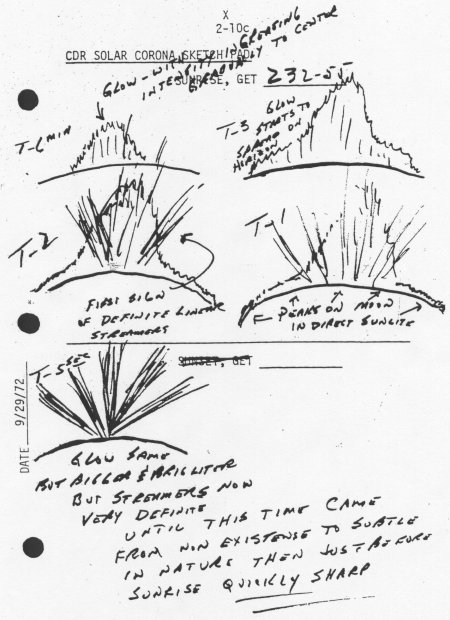

⌇
[ Wavelets ]
[ Wavelets ]
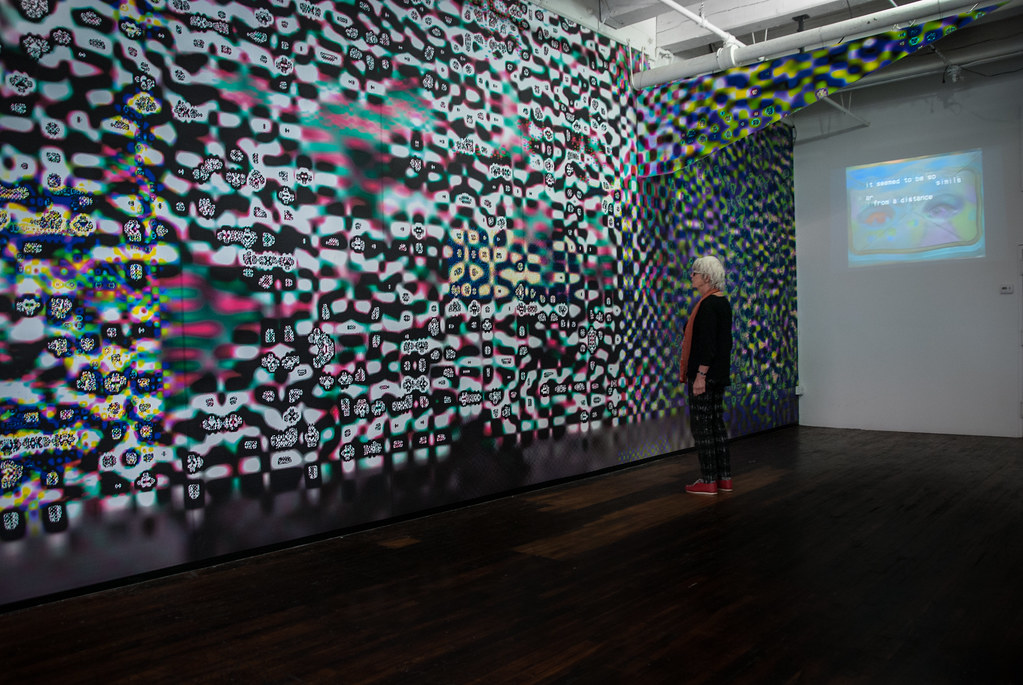
Myopia (2015)
2015. Transfer Gallery, Brooklyn New York, US
13x3.5m wall vinyl showcasing wavelets and extruding vectors.
Zooms into the JPG2000 wavelet compression artefacts.
Myopia zooms into the JPG2000 wavelet compression artefacts, created by introducing a line of ‘other language’ into the JPEG2000 file data.
The day before the iRD closed its doors, visitors were invited to bring an Exacto Knife, to cut their own resolution of ‘Myopia’, and mount them on any institution of choice (book, computer or other rigid surface).
(underneath) Myopia at Size Matters. SIZE IN PHOTOGRAPHY
February 1, 2024 – May 20, 2024, KunstPalast, DE.
2015. Transfer Gallery, Brooklyn New York, US
13x3.5m wall vinyl showcasing wavelets and extruding vectors.
Zooms into the JPG2000 wavelet compression artefacts.
Myopia zooms into the JPG2000 wavelet compression artefacts, created by introducing a line of ‘other language’ into the JPEG2000 file data.
The day before the iRD closed its doors, visitors were invited to bring an Exacto Knife, to cut their own resolution of ‘Myopia’, and mount them on any institution of choice (book, computer or other rigid surface).
(underneath) Myopia at Size Matters. SIZE IN PHOTOGRAPHY
February 1, 2024 – May 20, 2024, KunstPalast, DE.
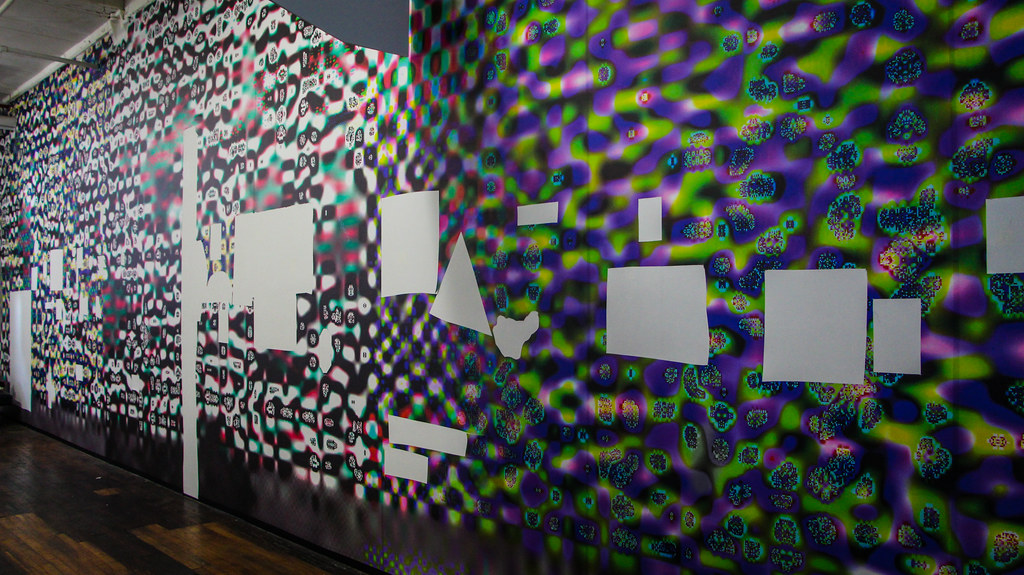



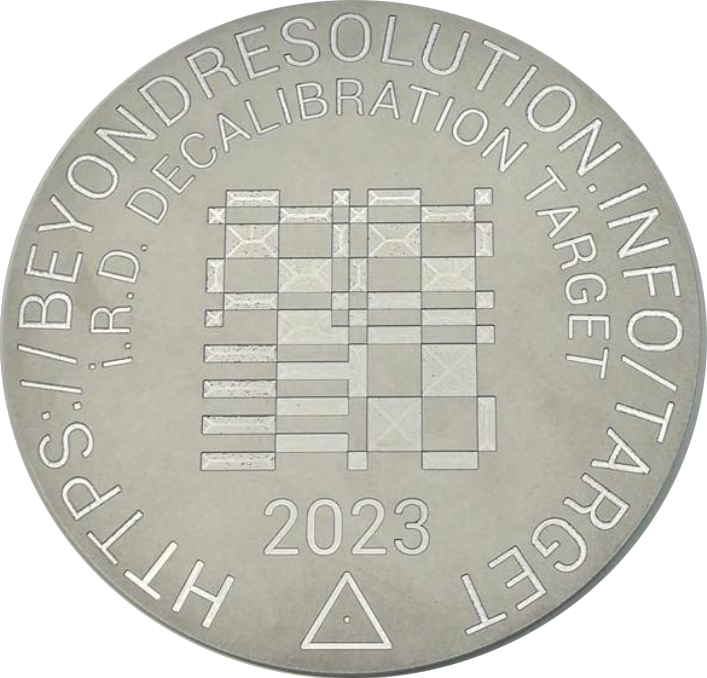
MARKER OF THE
DE/CALIBRATION TARGET
DCT REPO //
GENEALOGIES
◧⬒◨◧⬓
HOW NOT
TO BE READ.PDF
▣⬓⬒◨◧
DCT ENCRYPTION
STATION
◨◧◧⬓◨
JPEG
▣▣▣
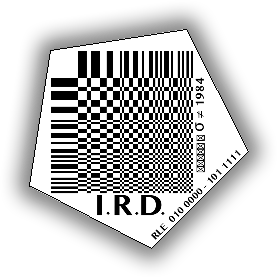
IM/POSSIBLE IMAGES
◧⬒◨⬓◧
THE i.R.D.
DE/CALIBRATION
ARMY
◧⬒◨⬓◧
SHREDDED HOLOGRAM ROSE
◨◧◧⬓◨
The i.R.D. de/calibration target (2023)
“A blip, a glitch on a satellite photo, an error in the rendering of an image shot by a drone. What might seem a mistake is a freshly painted marker that sits on a rooftop in one of the most historic neighbourhoods of Berlin. Located at the riverside, near the remains of the Berlin wall, the target functions as an AR beacon. On activation offers access to a cache of research about JPEG compression.
This 16 x 16m target can only be read from above, reminding us that resolution, and its recognition, determines what is seen, unseen or illegible. In De/Calibration Target, Rosa Menkman explores what happens when something exists outside our dimensions or system units of scale, and asks what tools are needed to distinguish it from its environment.”
The i.R.D. de/calibration target (which spells FF D8 in DCT, the start of a JPEG image marker) is indexed and seen by satellites, to be distributed and visited online (for now just Bing and Esri world imagery).
The marker makes an appearance in the Shredded Hologram Rose, when a media archeologist from the future visits the marker, which houses the DCT Repo - to find the information on how recalibrate == or de-glitch == the obsolete JPEG layer of a broken AI-Synthesized Hologram Rose.

Commissioned for Out of Scale, the 2023 transmediale exhibition, the De/Calibration Target can only be seen from above through satellite imagery or taken home as a postcard souvenir of this aerial perspective from transmediale warehouse.
Produced by transmediale, with the support of the Stimuleringsfonds Creative Industries NL.
 The institutions of Resolution Disputes [iRD] call attention to media resolutions. While a ’resolution’ generally simply refers to a standard (measurement) embedded in the technological domain, the iRD reflect on the fact that a resolution is indeed a settlement (solution), but at the same time a space of compromise between different actors (objects, materialities and protocols) who dispute their stakes (framerate, number of pixels etc.) within the growing digital territories.
The institutions of Resolution Disputes [iRD] call attention to media resolutions. While a ’resolution’ generally simply refers to a standard (measurement) embedded in the technological domain, the iRD reflect on the fact that a resolution is indeed a settlement (solution), but at the same time a space of compromise between different actors (objects, materialities and protocols) who dispute their stakes (framerate, number of pixels etc.) within the growing digital territories.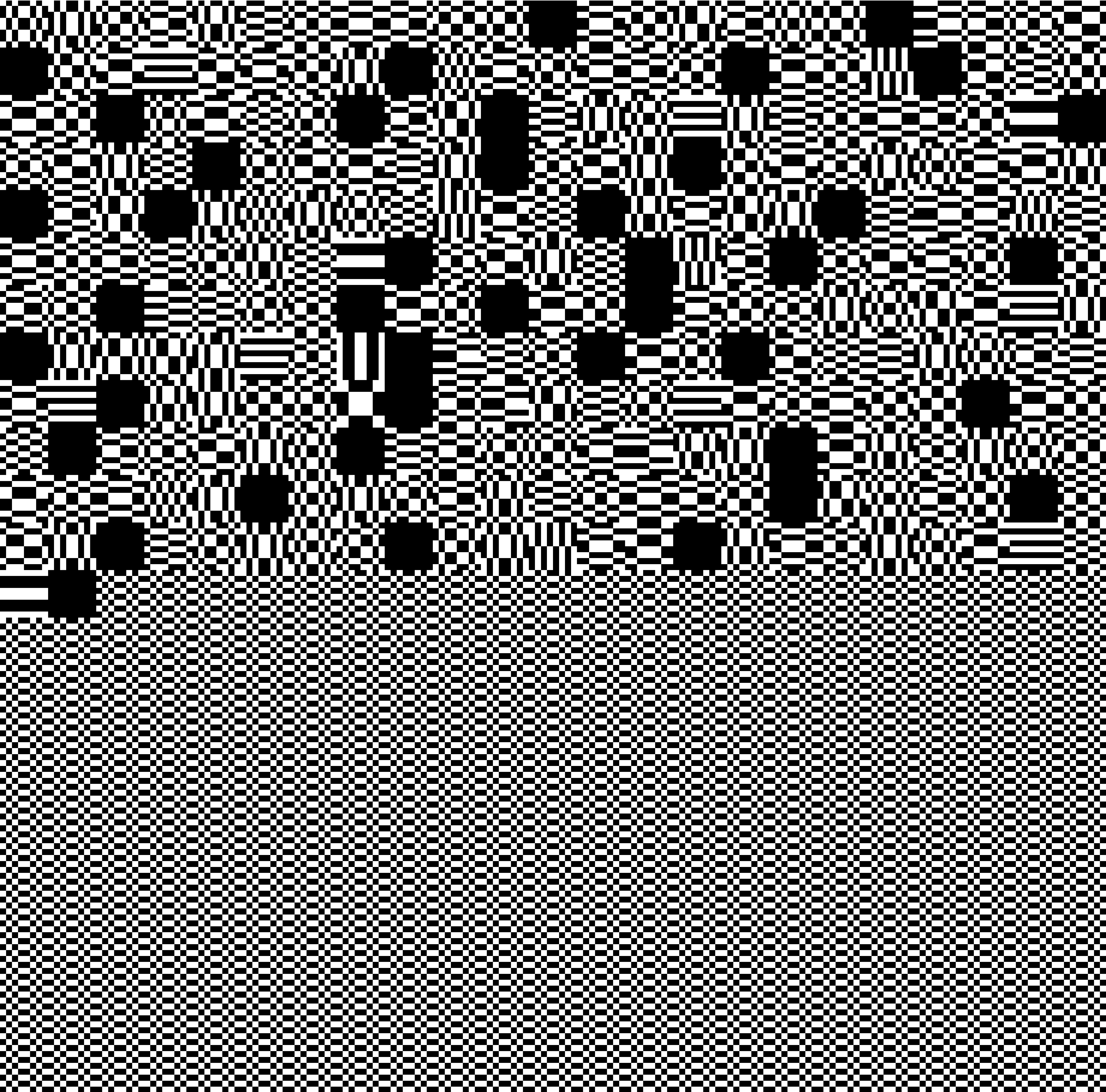 Resolutions inform both machine vision and human ways of perception. They shape the material of everyday life ubiquitously. They do this not just as an “interface effect”* but as hyperopic lens, obfuscating any other possible alternative resolution from the users media literacy.
Resolutions inform both machine vision and human ways of perception. They shape the material of everyday life ubiquitously. They do this not just as an “interface effect”* but as hyperopic lens, obfuscating any other possible alternative resolution from the users media literacy.
⠀▦▦▦▦▦▦▦▤▤▣▣▣▤ ⠀▦▦▦▦▦▦▤▤▣▣▣▤▤ ⠀▦▦▦▦▦▤▤▣▣▣▤▤▦ ⠀▦▦▦▦▤▤▣▣▣▤▤▦▦ ⠀▦▦▦▤▤▣▣▣▤▤▦▦▦ ⠀▦▦▤▤▣▣▣▤▤▦▦▦▦ ⠀▦▤▤▣▣▣▤▤▦▦▦▦▦ ⠀▤▤▣▣▣▤▤▦▦▦▦▦▦ ⠀▤▣▣▣▤▤▦▦▦▦▦▦▦ ⠀▤▣▣▣▤▤▦▦▦▦▦▦▦ ⠀▤▤▣▣▣▤▤▦▦▦▦▦▦ ⠀▦▤▤▣▣▣▤▤▦▦▦▦▦ ⠀▦▦▤▤▣▣▣▤▤▦▦▦▦ ⠀▦▦▦▤▤▣▣▣▤▤▦▦▦ ⠀▦▦▦▦▤▤▣▣▣▤▤▦▦ ⠀▦▦▦▦▤▤▣▣▣▤▤▦▦ ⠀▦▦▦▦▦▤▤▣▤▤▦▦▦ ⠀▦▦▦▦▦▦▤▣▤▦▦▦▦ ⠀▦▦▦▦▦▦▦▣▦▦▦▦▦ ⠀▦▦▦▦▦▦▦▣▦▦▦▦▦
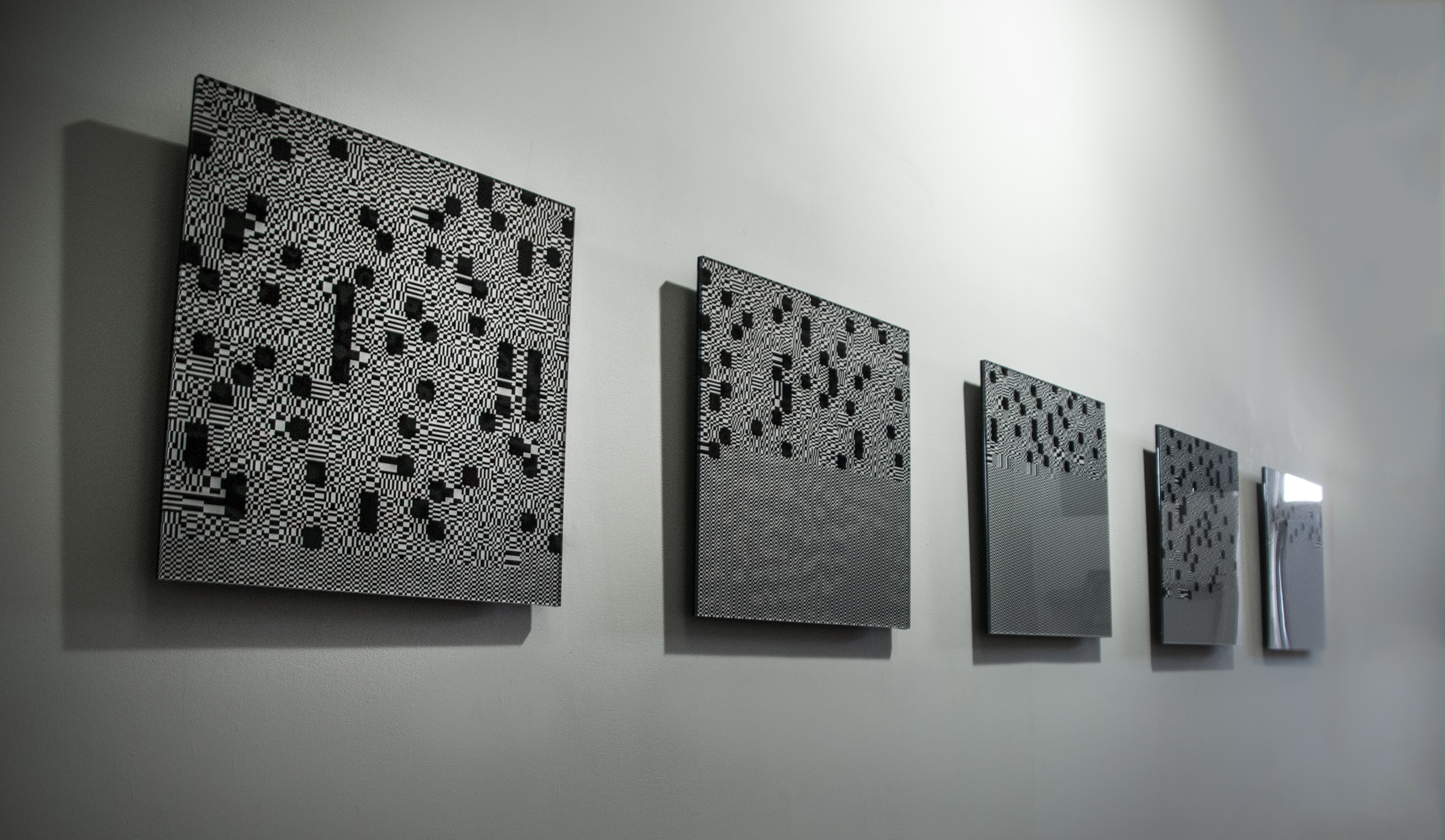
“everywhere we imagined ourselves standing turned into a cliche beneath our feet” –Naomi Klein, No logo, 1999.
A publication in five acrylics / five postcards.
Even though the iRD mimics an institute, in reality it is not a classic, institutional organ. Instead, the iRD multiplexes the term institution, by revisiting its usage in the late 1970s. In this context, formulated by Joseph Goguen and Rod Burstall, institution refers to a slightly ‘more compound framework’, that deals with the growing complexities, connecting different logical systems (such as databases and programming languages) within computer sciences. A main result of these non-logical institutions is that different logical systems can be glued together at a substrata level, forming illogical frameworks through which computation also takes place.
Inspired by the idea of hyper functional, yet illogical frameworks, the iRD is dedicated to researching the interests of anti-utopic, obfuscated, lost and unseen, or simply ‘too good to be implemented’ resolutions.
The institutions of Resolution Disputes [iRD] call attention to media resolutions. While a resolution generally simply refers to a determination of functional settings in the technological domain, the iRD stresses that a resolution is indeed a settlement (solution), but at the same time also entails a space of compromise between different actors (objects, materialities, and protocols) in dispute over norms (frame rate, number of pixels etc.). Common settings can ossify as generally accepted requirements or de facto standards, while others standards are notated as norms by standardizing organizations such as the International Organization for Standardization. We call this progress*.
Resolutions are non-neutral standard settings that involve political, economical, technological and cultural values and ideologies, embedded in the genealogies and ecologies of our media. In an uncompromisingly fashion, quality (fidelity) speed (governed by efficiency) volume (generally encapsulated in tiny-ness for hardware and big when it comes to data) and profit (economic or ownership) have been responsible for plotting the vector of progress. This dogmatic configuration of belief x action has made upgrade culture a great legitimizer of violence, putting its insufficient technological resolutions to rest. While a resolution can thus be understood as a manifold assemblage of common, but contestable standards, it should also be considered in terms of other options; those that are unknown and unseen, obsolete and unsupported.
.
Resolutions inform both machine vision and human ways of perception. They shape the material of everyday life ubiquitously. As the media landscape becomes more and more compound, or in other words, an heterogenous assemblage in which one technology never functions on its own, its complexities have moved beyond a fold of everyday settings. Technological standards have compiled into resolution clusters; media platforms that form resolutions like tablelands, flanked by steep cliffs and precipices looking out over obscure, incremental abysses that seem to harbor a mist of unsupported, obsolete norms.
The platforms of resolution now organize perspective. They are the legitimizers of both inclusion and exclusion of what can not be seen or what should be done, while the fog, the other possibilities become more and more obscure.
It is important to realize that the resolutions platforms are not inherently Evil*. They can be impartial. It is important that we unpack these resolutions and note that they are conditioning our perception. A culture that adheres to only one or few platforms of resolutions supports nepotism amongst standards. These clusters actively engage simpleness and mask the issues at stake, savoring stupidity, and are finally bound to escalate into glutinous tech-fascism.
The question is, have we become unable to construct our own resolutions, or have we become oblivious to them?
Resolutions work not just as an interface effect* but as hyperopic lens, obfuscating any other possible alternative resolutions from the users screens and media literacy. When we speak about video, we only ever refer to a four cornered moving image. Why do we not consider video with more or less corners, timelines, or soundtracks. Fonts are monochrome; they do not come with their own textures, gradients or chrominance and luminance mapping. Text editors still follow the lay-out of paper; there is hardly any modularity within written word technologies. Even ghosts, the figments of our imagination, have been conditioned to communicate exclusively through analogue forms of noise (the uncanny per default), while aliens communicate through blocks and lines (the more intelligent forms of noise). We are hiking the resolution platforms comfortably. Unknowingly suffering from technological hyperopia, We have lost track of the compromises that are at stake inside our resolutions and are staring at the screens showing us mirage after mirage.
A resolution is the lens through which constituted materialities become signifiers in their own right. They resonate the tonality of the hive mind and constantly transform our technologies into informed material vernaculars.
Technology is evolving faster than we, as a culture can come to terms with. This is why determinations such as standards are dangerous; they can preclude the alternative. The radical digital materialist believes in informed materiality*: while every string of data is ambiguously fluid and has the potential to be manipulated into anything, every piece of information functions within /*adhesive/ encoding, contextualization and embedding. Different forms of ossification slither into every crevice of private life, while unresolved, ungoverned free space seems to be slipping away. There lies the power of standardization.
We are in need for a re-(Re-)Distribution of the Sensible.
The iRD offers a liminal space for resolution studies. Resolution studies is not only about the effects of technological *progress or about the esthetization of the scales of resolution. Resolution studies is a studies on how resolution embeds the tonalities of culture, in more than just its technological facets.
Resolution studies researches the standards that could have been in place, but are not. As a form of vernacular resistance, based on the concept of providing ambiguous resolutions, the iRD employs the liminal resolution of the screen as a looking-glass. Here, hyperopia is fractured and gives space to myopia, and visa versa. This is how iRD exposes the colors hidden inside the grey mundane objects* of everyday life.
The iRD is not a Wunderkammer for dead media*, but a foggy bootleg trail for vernacular resistance.
Progress has fathered many dead technologies. A Wunderkammer, or curiosity cabinet of media resolutions would celebrate these dead objects by trapping them inside a glass bell, relieving them in-definitely of their action radius. While the iRD adheres to the settlements of governing media resolutions, it also welcomes ventures along the bootleg trails of the tactical undead*. These undead move beyond resolution, through the literacies of the governing techno cultures, into liminal spaces. They follow the wild and uncanny desire paths that cut through sensitive forms and off-limit areas into speculative materialities*. They threaten the status quo of secure forms of media and provide the ambiguity that is so necessary for inspiration, action and curiosity*.
The iRD believes that methods of creative problem creation* can bring authorship back to the layer of resolution setting. Resolution theory moves against what sometimes seems like an unsolvable puzzle of flattening reality, while the iRD might seem like a one way trail straight into the Sea of Fog and towards the abyss of techno-norms. But it could also be a modular framework that opens and expands standards through inspection and reflection. As any good theory of media, resolution theory is a theory on literacy. Literacy of the machines, the people, the people creating the machines and the people being created by the machines. Through challenging the platforms of resolution, it can help the wanderer to scale actively between these states of hyperopia and myopia. It can uncover crystal cities of fog as well as shine a light on the soon to be distributed futures. Here we can mine for the timonds.
︎ official Transfer Gallery page
︎ An in depth all info PDF about this work
︎ Resolution Challenge!
︎ the essay
COVERAGE
‘Resolution Disputes: A Conversation Between Rosa Menkman and Daniel Rourke’, Furtherfield
“By using the terms ‘obfuscation’ and ‘dysfunction’ you are invoking a will – perhaps on your part, but also on the part of the resolutions themselves – to be recognised. I love that gesture. I can hear the objects in iRD speaking out; making themselves heard, perhaps for the first time.”
‘Accidental Vision’, Postmatter“The boundaries of the screen are challenged in Rosa Menkman’s new exhibition at TRANSFER Gallery, using technological error to disrupt expectations.”
‘Having Cryptic Conversations about Encrypted Graphics’, The Creator’s Project“ Rosa Menkman’s new media artwork celebrates both the computer screen glitch and the actual resolution of the image it’s trying—and failing—to represent, highlighting the accidents in the “free space” between them.”
︎ A tour of Internet Yami-ichi, the offline Internet flea market (featuring the i.R.D.) by Regine Debatty on We Make Money Not Art.
 The question is, ‘have we become unable to construct our own resolutions, or have we become oblivious to them?’ Either way we are in need for another re-“(Re-)Distribution of the Sensible”.
The question is, ‘have we become unable to construct our own resolutions, or have we become oblivious to them?’ Either way we are in need for another re-“(Re-)Distribution of the Sensible”.
 iRD intend to impose methods of “creative problem creation” to bring authorship back to the layer of setting a 'resolution'. The radical digital materialist believes in an “informed materiality”; while every string of data is ambiguously fluid and has the potential to be manipulated into anything, every piece of information functions within /adhesive*/ encoding, contextualization and embedding (etc).
iRD intend to impose methods of “creative problem creation” to bring authorship back to the layer of setting a 'resolution'. The radical digital materialist believes in an “informed materiality”; while every string of data is ambiguously fluid and has the potential to be manipulated into anything, every piece of information functions within /adhesive*/ encoding, contextualization and embedding (etc).
 Through iRDs tactics beyond resolution, the otherwise grey mundane objects of everyday-life show their colors. iRD is not a wunderkabinet of dead media, but a foggy bootleg trails for vernacular resistance.
Through iRDs tactics beyond resolution, the otherwise grey mundane objects of everyday-life show their colors. iRD is not a wunderkabinet of dead media, but a foggy bootleg trails for vernacular resistance.▣▣▣▣▣▣▣▣▣▣▣▣▣









